The Q6 series from Samsung is the simplest line of QLED televisions from the Koreans for the year 2024. It stands out for its ease of use and several useful features. Thanks to the Tizen system, which we find in the Q60D, we can easily switch between applications like Netflix and Prime Video, and everything works quickly and smoothly. Operating it does not require special preparation – everything is intuitive. One of the nicer additions is the solar remote. It not only eliminates the need for battery replacements but also allows you to control other devices, such as a decoder. This means you don't have to keep several remotes on hand, which everyone who values order in the living room will appreciate. In terms of image quality, the television performs really well in its class. The contrast is high enough that the picture looks clear even during darker scenes. In bright rooms, the television manages without major problems – the screen is bright enough for the image to be readable during the day. Of course, the lack of Dolby Vision may be noticeable with HDR content, but support for HDR10+ is still a good alternative, especially at this price. The Q60D is also a good choice if you occasionally play on a console. The low input lag means the image responds quickly to our actions, which works well for both dynamic action games and sports. The Game Bar feature is a simple way to quickly adjust settings without leaving the game, which will definitely be useful for many people. The appearance of the Q60D also scores points – the slim design looks good in the living room, doesn't take up much space, and fits easily into various interior styles. In summary: This is definitely not equipment that aspires to be the best television of all time, but it is certainly a model that is worth its relatively low price.
- Matching (Score)
- Our verdict
- TV appearance
- Where to buy
- Contrast and black detail
- HDR effect quality
- Factory color reproduction
- Color reproduction after calibration
- Smoothness of tonal transitions
- Image scaling and smoothness of tonal transitions
- Blur and motion smoothness
- Console compatibility and gaming features
- Input lag
- Compatibility with PC
- Viewing angles
- TV efficiency during daytime
- Details about the matrix
- TV features
- Apps
- Playing files from USB
- Sound
Samsung Q60D / Q67D / Q68D vs Samsung U8000F (VA)
Direct compare
Q60D / Q67D / Q68D
U8000F / U8092F


Panel type: LCD VA
Resolution: 3840x2160
System: Tizen
Model year: 2024
Complete the survey to find out the result

Panel type: LCD IPS
Resolution: 3840x2160
System: Tizen
Model year: 2025
Complete the survey to find out the result

Overall rating
6.3
5.7
Movies and series in UHD quality
6.3
5.7
Classic TV, YouTube
6.0
5.9
Sports broadcasts (TV and apps)
5.2
5.5
Gaming on console
7.0
6.5
TV as a computer monitor
6.0
6.0
Watching in bright light
6.0
3.8
Utility functions
7.3
5.5
Apps
8.7
8.7
Sound quality
6.2
5.7
Complete the survey to find out what fits your preferences
Advantages
High native contrast
Performs well on sunny days
Easy-to-use Tizen operating system
Low input lag
An interesting choice for casual gamers
Decent black and contrast (VA panel version)
Advanced Smart system: Tizen
Great for working with text - excellent font display
Basic functions for gamers - VRR and ALLM
Low input lag
Disadvantages
No Dolby Vision
No recording support
Will not play audio in DTS format
Low brightness
Worse viewing angles than the IPS matrix version (Obvious obviousness 😉)
Infrared remote control
Worse appearance than its predecessor
Our verdict
Samsung U8000F with a VA panel is a television that can pleasantly surprise in its class – of course, if we know what to expect from it. The biggest advantage of this variant is certainly the quality of black levels. Compared to the version with an IPS panel, the difference is enormous – the image gains depth, contrast looks significantly better, and evening film sessions no longer feel like watching content through a grey filter. For a budget segment device, this is truly a nice surprise. The reliable Tizen system is also a plus, as it not only runs smoothly but also offers access to a full range of applications, support for SmartThings, and a voice assistant (via the app). The PC mode and console connection function flawlessly – fonts are clear and readable. Additionally, it includes basic features for gamers, such as VRR and ALLM, which – although they won’t transform this television into an e-sports machine – are completely sufficient for occasional gaming.
Of course, like any construction in this budget, the U8000F with a VA panel has its limitations. Viewing angles are not its strongest point – when watching from the side, it’s easy to notice a drop in quality. Nonetheless, it's hard to see this as a serious flaw – because something has to give. Better black levels always come at the cost of slightly less flexibility in positioning. When it comes to HDR, we have rather a symbolic approach – brightness is too low to speak of a true "wow" effect, and the colour palette is limited. But let’s face the truth – that’s not the reason one buys such a television. So if you are planning to purchase the U8000F, we definitely recommend opting for the variant with a VA panel. It’s still a very basic model, but in this version, it offers more than one might expect – especially in terms of black quality. And in this price bracket, that’s quite a lot.
TV appearance




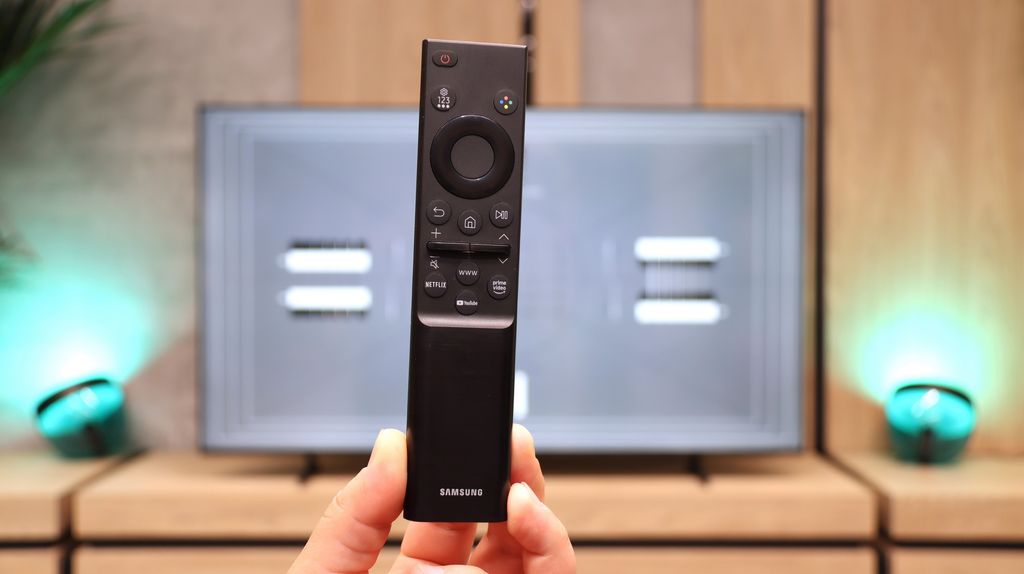
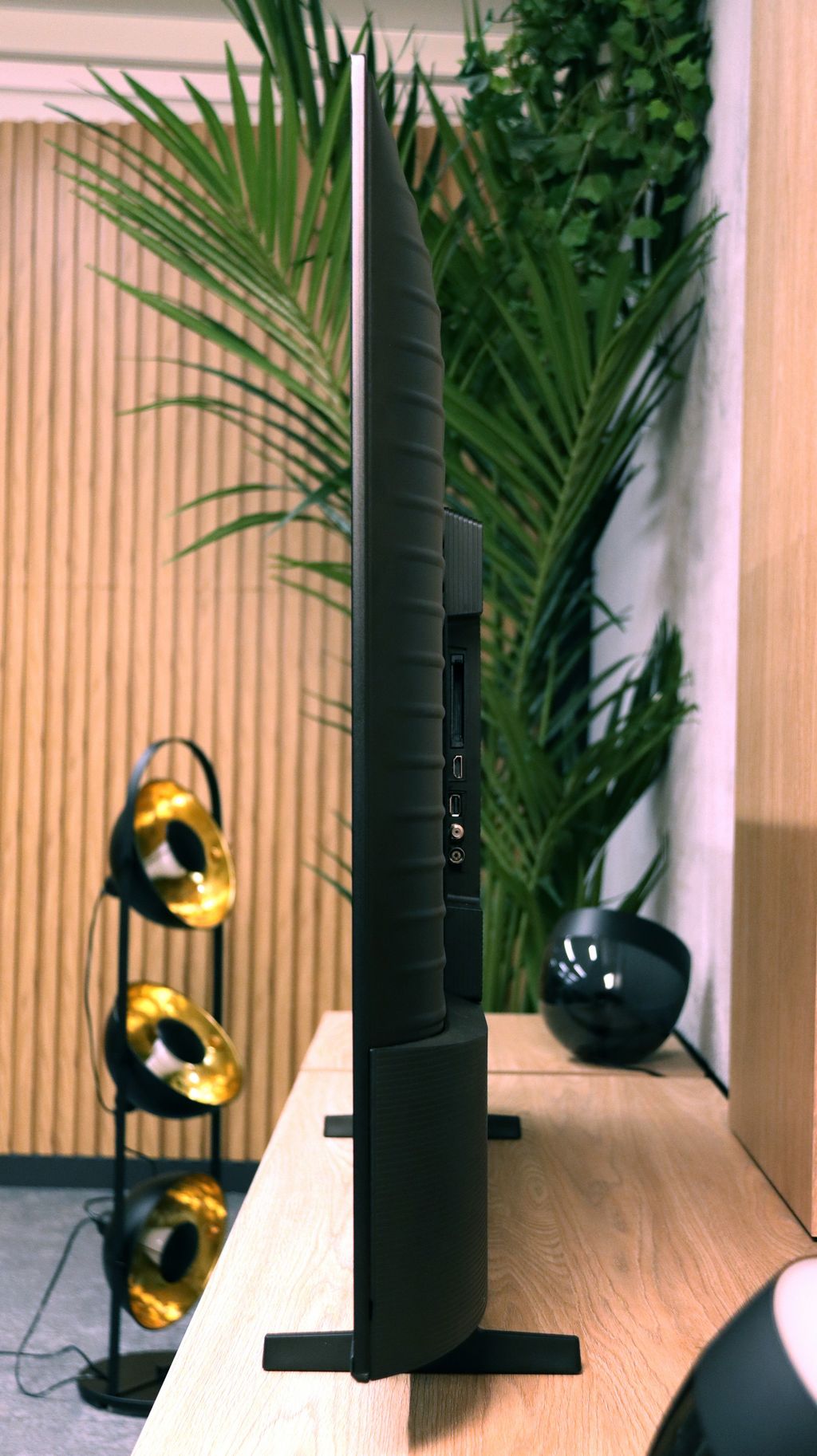
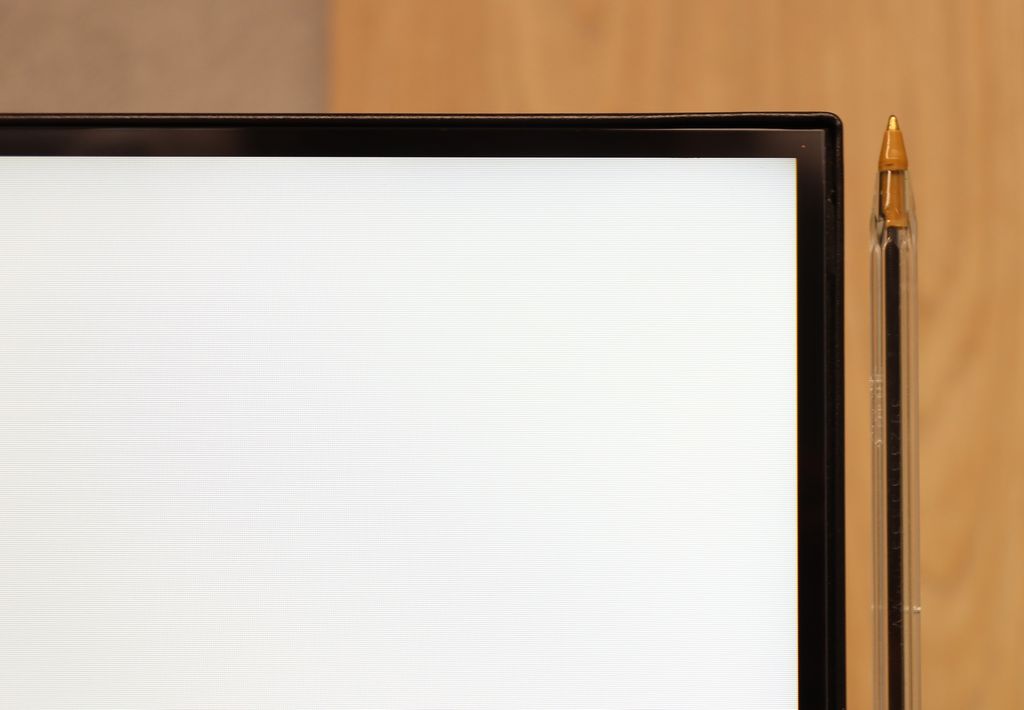
Contrast and black detail
6/10
5.3/10
Local dimming function: No
Local dimming function: No
Contrast:

Result
5,650:1

Result
6,500:1

Result
5,850:1

Result
5,850:1

Result
5,400:1

Result
4,600:1

Result
4,150:1

Result
3,900:1

Result
3,750:1

Result
3,400:1
Halo effect and black detail visibility:

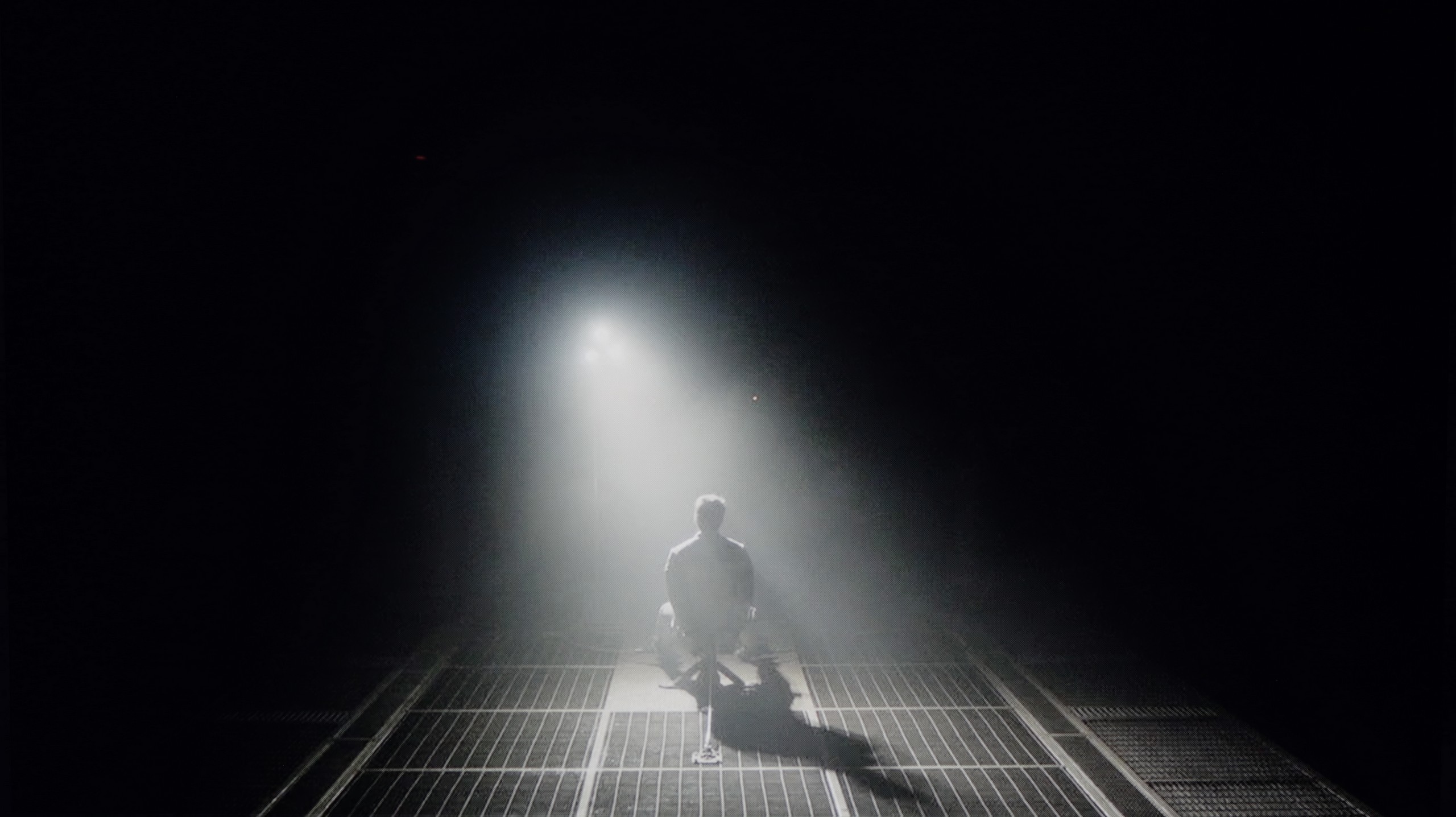
The Samsung Q60D television is equipped with a VA panel, which provides deeper blacks and higher contrast compared to IPS/ADS panels. VA panels are characterised by a better ability to display deep blacks, so if we are looking for an LED display for nighttime viewing, this type of panel should not let us down. In contrast tests, the television showed a result of around 6000:1, which can be considered a decent outcome, ensuring satisfying visual experiences in most scenes. In more challenging scenes, such as that from the film Oblivion, the television performs well with light separation, adding detail and depth. However, in scenes with a more demanding light composition, like that from the film Sicario 2, the limitations resulting from the lack of local dimming technology are noticeable. The black elements of the image tend to resemble navy blue. Despite this phenomenon, the Q60D offers really decent contrast.
It is worth noting that the test concerns variants with a VA panel, which perform considerably better in terms of black levels and contrast than the 55-inch version equipped with an IPS panel. Thanks to the higher native contrast (although it is not a top result among VA panels), the tested scenes looked significantly better – without noticeable greyness or the typical washed-out shadows associated with IPS panels. The black levels in the U8092F model can be considered really good and satisfying, especially in this price range. Of course, we are not dealing with a construction equipped with local dimming, so it is difficult to expect spectacular results in very challenging scenes. On the other hand, we are talking about an exceptionally budget television that performs quite solidly within its category.
HDR effect quality
5.7/10
3.1/10
Luminance measurements in HDR:

Result
527 nit

Result
530 nit

Result
524 nit

Result
531 nit

Result
537 nit

Result
212 nit

Result
173 nit

Result
265 nit

Result
90 nit

Result
250 nit
Scene from the movie “Pan” (about 2800 nits)


Scene from the movie “Billy Lynn” (about 1100 nits)

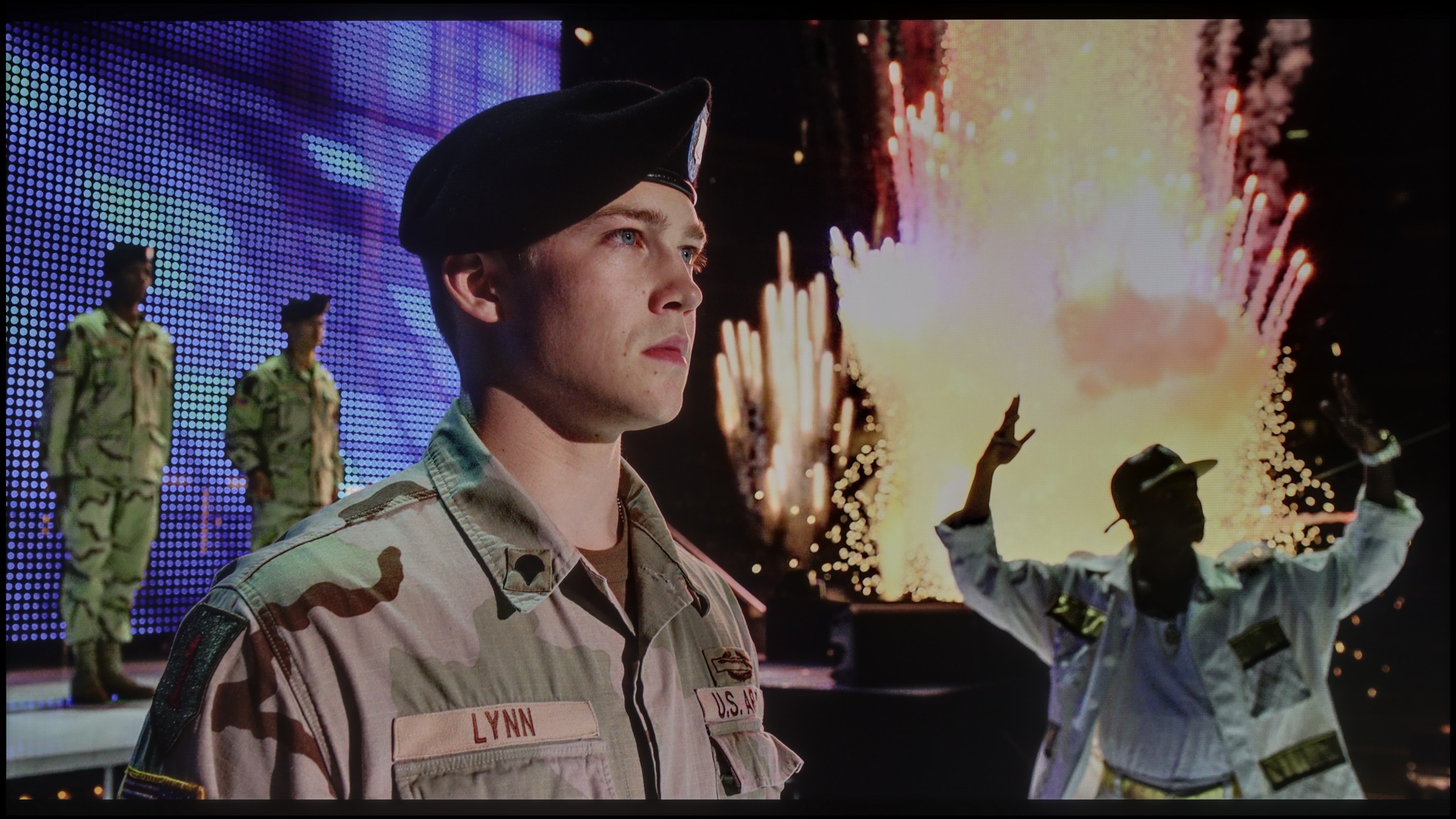
Static HDR10


Dynamic: HDR10+
Dynamic: HDR10+


HDR luminance chart:
Samsung U8000F (VA)
Luminancja HDR
Luminance of RGB colors
Samsung Q60D / Q67D / Q68D
Luminancja HDR
Luminance of RGB colors
The Samsung Q60D television, regardless of the scene being tested, achieves brightness above 500 nits, which is above average for this class of devices. Such a level of brightness allows one to experience a taste of true home cinema, with clearly visible details in bright parts of the image and well-reproduced contrast dynamics, especially when watching content from streaming platforms or movies played from Blu-ray. As a result, film screenings gain greater depth and realism, particularly in well-lit scenes. Despite the use of quantum dot technology (QLED), the television does not achieve outstanding results in colour reproduction. The coverage of the DCI-P3 colour space is only 90%, which may be noticeable in more demanding scenes, where the richness and saturation of colours play a key role in image quality.
While the U8000F with a VA panel can still be praised for decent blacks, there is no longer any reason to be enthusiastic about brightness – especially in HDR scenes. The television achieves a maximum of just under 250 nits, which is simply too low to speak of any impressive light effects. Bright elements appear pale, and scenes that should sparkle look rather flat. We observed an interesting situation during the test of a scene from the film Sicario 2 – the screen became noticeably darker, as if the television was trying to hide its limitations in displaying blacks. One might get the impression that the device artificially darkens the image to enhance contrast, but in practice, the effect makes very little difference, other than the fact that we see less on the screen. Furthermore, there is the issue of colours – the U8000F does not support a wide colour gamut, so one cannot count on the vibrant, saturated hues known from better models. The HDR image here resembles slightly brightened SDR and... perhaps that is even a good thing. With this model, it is not worth expecting a cinematic experience – it is better to treat HDR as a modest addition.
Factory color reproduction
6.5/10
6.5/10


Factory Mode
After calibration
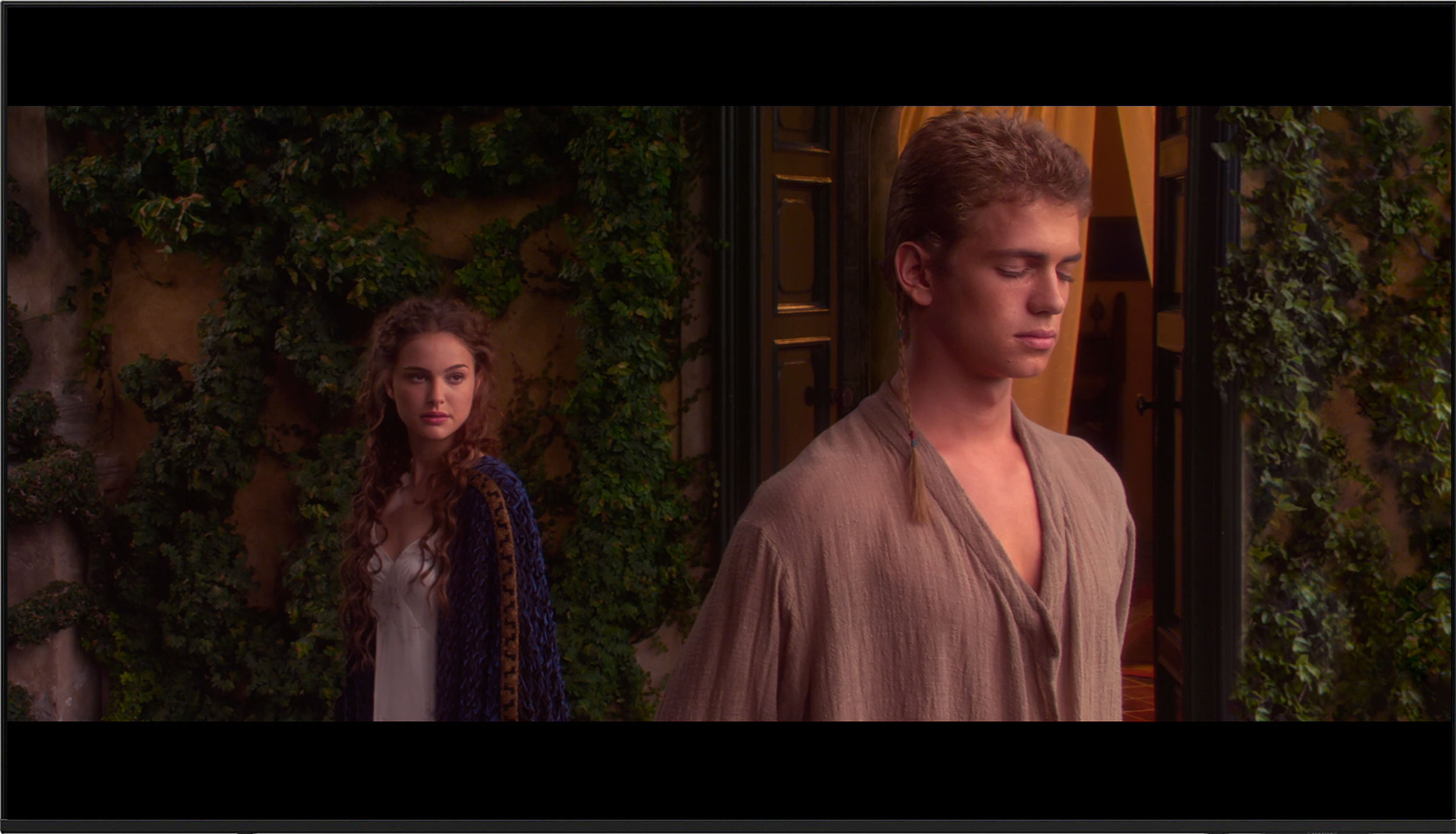
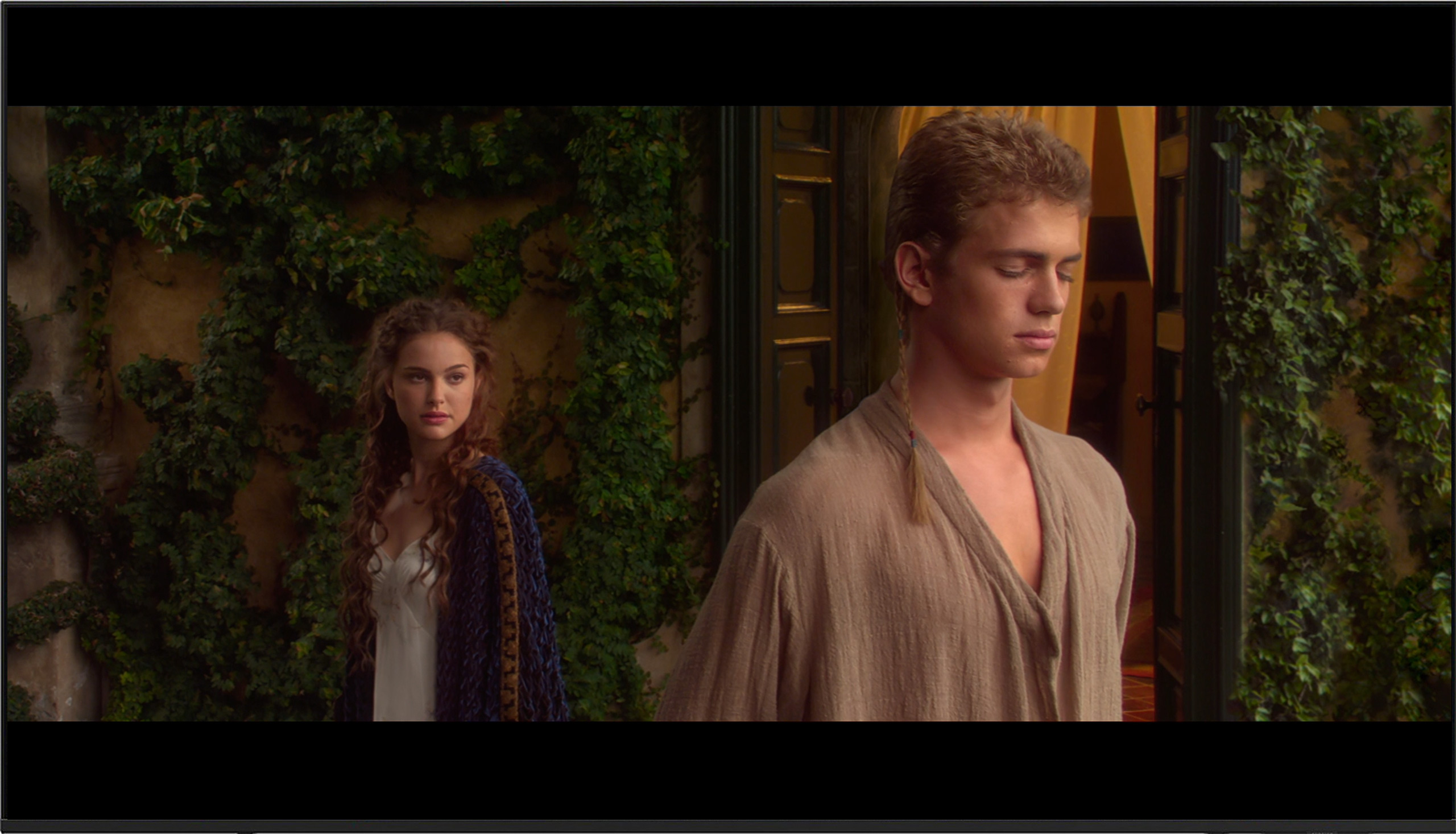
Factory Mode
After calibration
Samsung has been offering a "Filmmaker" mode in its televisions for several years, aimed at providing the most faithful picture settings straight from the factory, in accordance with the vision of filmmakers. This is certainly a significant step towards cinematic quality at home; however, it is worth noting that this mode is not without its problems.
For instance, the white balance in both SDR and HDR modes exhibits an excessive amount of red hue, causing the picture to appear too warm. As a result, the skin of actors and bright scenes may seem unnaturally pinkish. The Colour Checker test further confirms this issue – colour samples often shift towards red tones, deviating from the neutral colour reproduction that would be more desirable in a professional setting.
When it comes to contrast, there is a noticeable drop at the beginning of the gamma graph, where values below 2.4 drop all the way down to 2.1. Consequently, the image in darker scenes may appear less distinct, losing depth. In terms of HDR content, the EOTF curve (responsible for brightness reproduction) shows a strong spike at the beginning of the graph, which may lead to excessive brightness in the lighter parts of the image, disrupting the natural tonal balance.
The Samsung U8000F has been tested by us in the best picture mode it offers out of the box – the Filmmaker Mode. This profile is theoretically meant to provide a neutral, cinematic image devoid of unnecessary enhancements and artificial beautifications. In the case of SDR content – primarily in HD or SD resolution – the television performed surprisingly decently right out of the box. The only noticeable flaw was brightness management. The gamma chart showed some deviations – slight brightening or dimming of certain tones – but in practice, this did not significantly affect the viewing experience. Considering the television's segment, it performs quite well.
However, the situation is much weaker in HDR mode. While the white balance was still acceptable, the colour inaccuracies were very apparent. In the Color Checker test, almost every sample was outside the target point, and the image itself appeared unnatural – the colours were shifted, sometimes too cool, other times simply dull and lifeless. The main problem lies in the hardware limitations – the U8000F does not support the wide colour gamut of DCI-P3, so it is physically incapable of reproducing the colours that the HDR standard anticipates. Unfortunately, this is evident in almost every more demanding scene.
Color reproduction after calibration
8/10
7.5/10



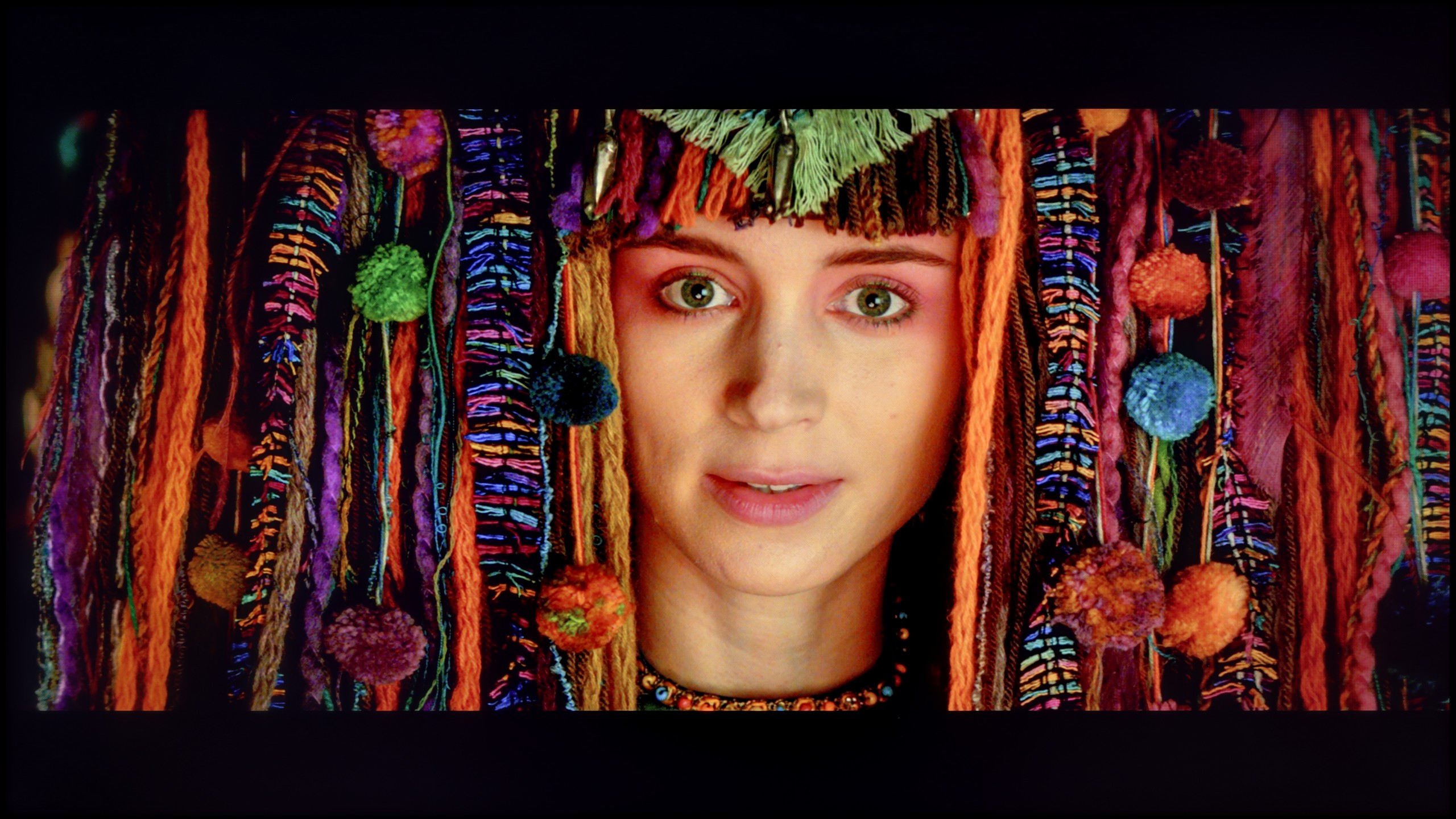
After professional calibration of the Samsung Q60D television in film mode, users can enjoy a significant improvement in image quality. Samsung televisions have always offered 2- and 20-point grey scale adjustments, as well as an advanced CMS (Color Management System), which allows for precise colour and shade adjustments. The white balance for both SDR and HDR has been free from strong spikes and tendencies for colours to shift to red hues, greatly enhancing the naturalness of the image. Although a few more significant errors can still be observed in HDR mode, the overall colour reproduction quality has been excellently improved. Regarding contrast, although drastic changes cannot be mentioned due to limitations in the television's technology, the improvement is noticeable. Thanks to calibration, details in dark scenes are more visible, and the differences between light and dark elements of the image have been enhanced. This makes the overall viewing experience more satisfying, allowing viewers to enjoy greater depth and realism in the displayed content.
Right out of the box, the U8000F offered quite a decent image in SDR for its price class. However, we managed to enhance it slightly – we reduced a subtle purple tint and improved the gamma characteristics, giving it a more natural curve. Despite these adjustments, the television still tends to overly brighten the brightest details – the gamma chart shows a clear inflection that cannot be completely corrected.
In HDR mode, however, it is noticeably weaker. It is hard to speak of any significant improvement here – despite attempts to adjust the settings, the image still presents considerable colour inaccuracies. A Delta E exceeding 7 signifies noticeable deviations that could not be effectively reduced. Unfortunately, this is a limitation of the construction itself – the U8000F simply was not designed for serious HDR. In everyday viewing in SDR, it performs quite well, but when it comes to HDR content... it's best not to have overly high expectations.
Smoothness of tonal transitions
7/10
9.5/10



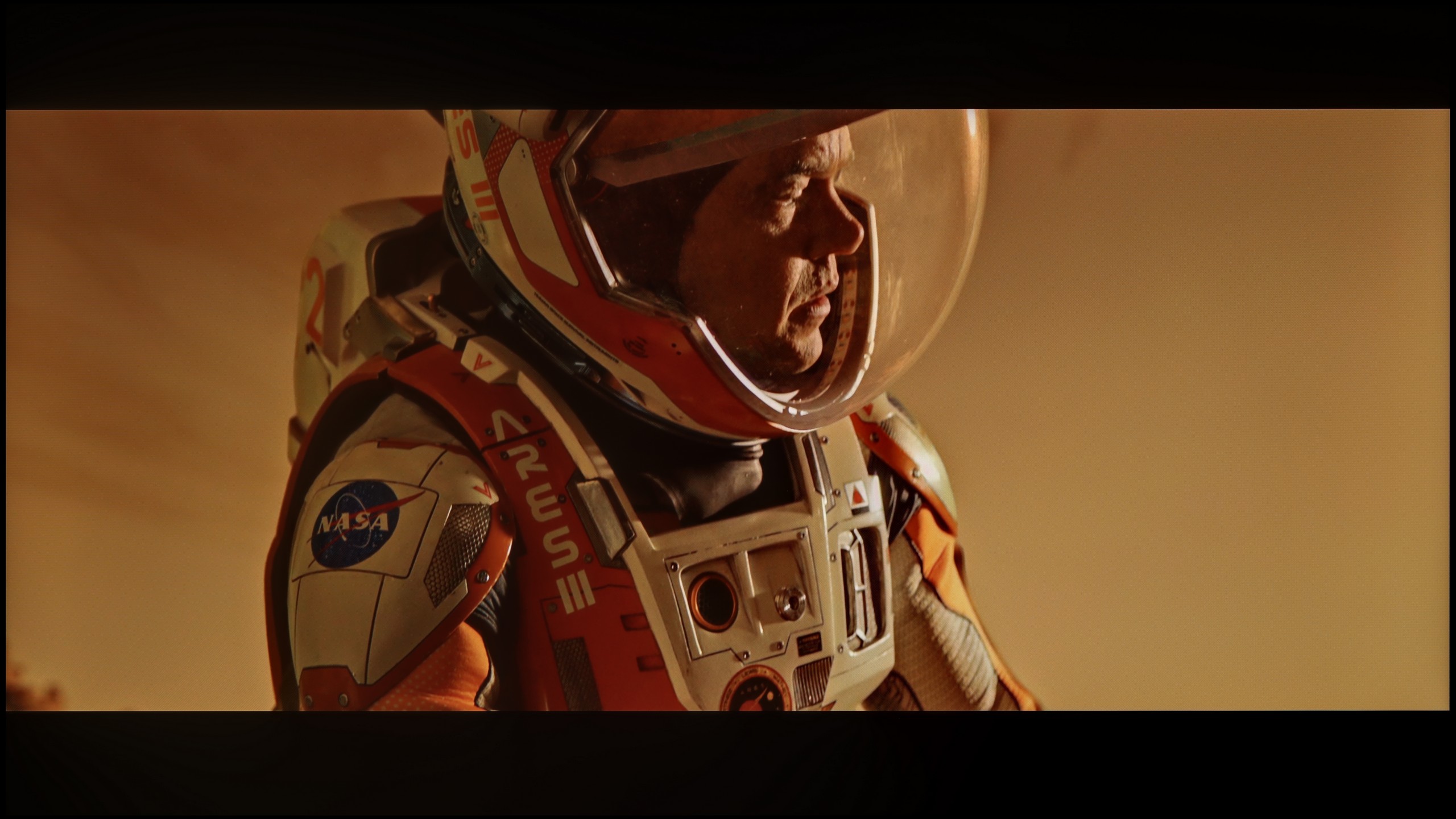

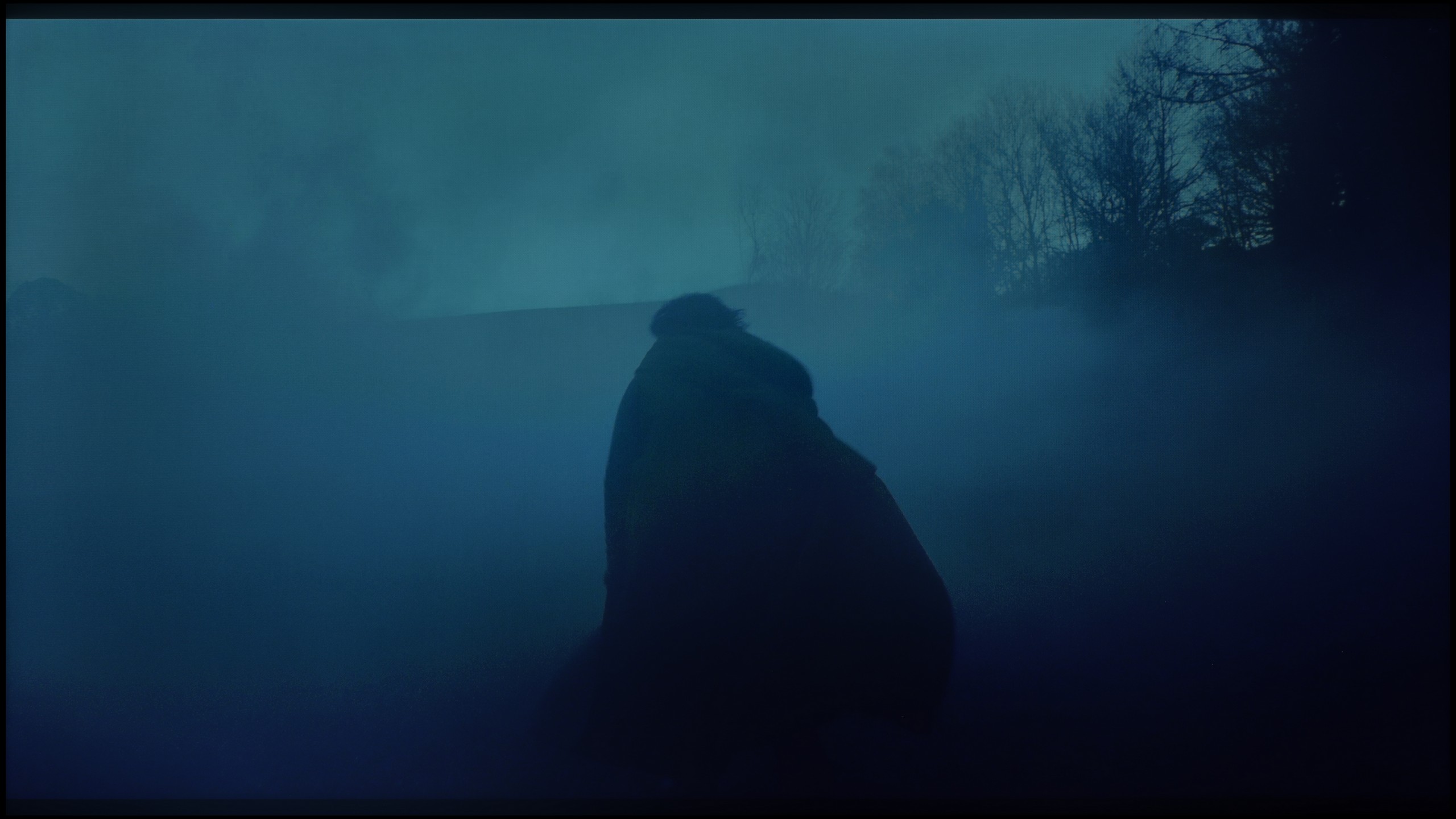

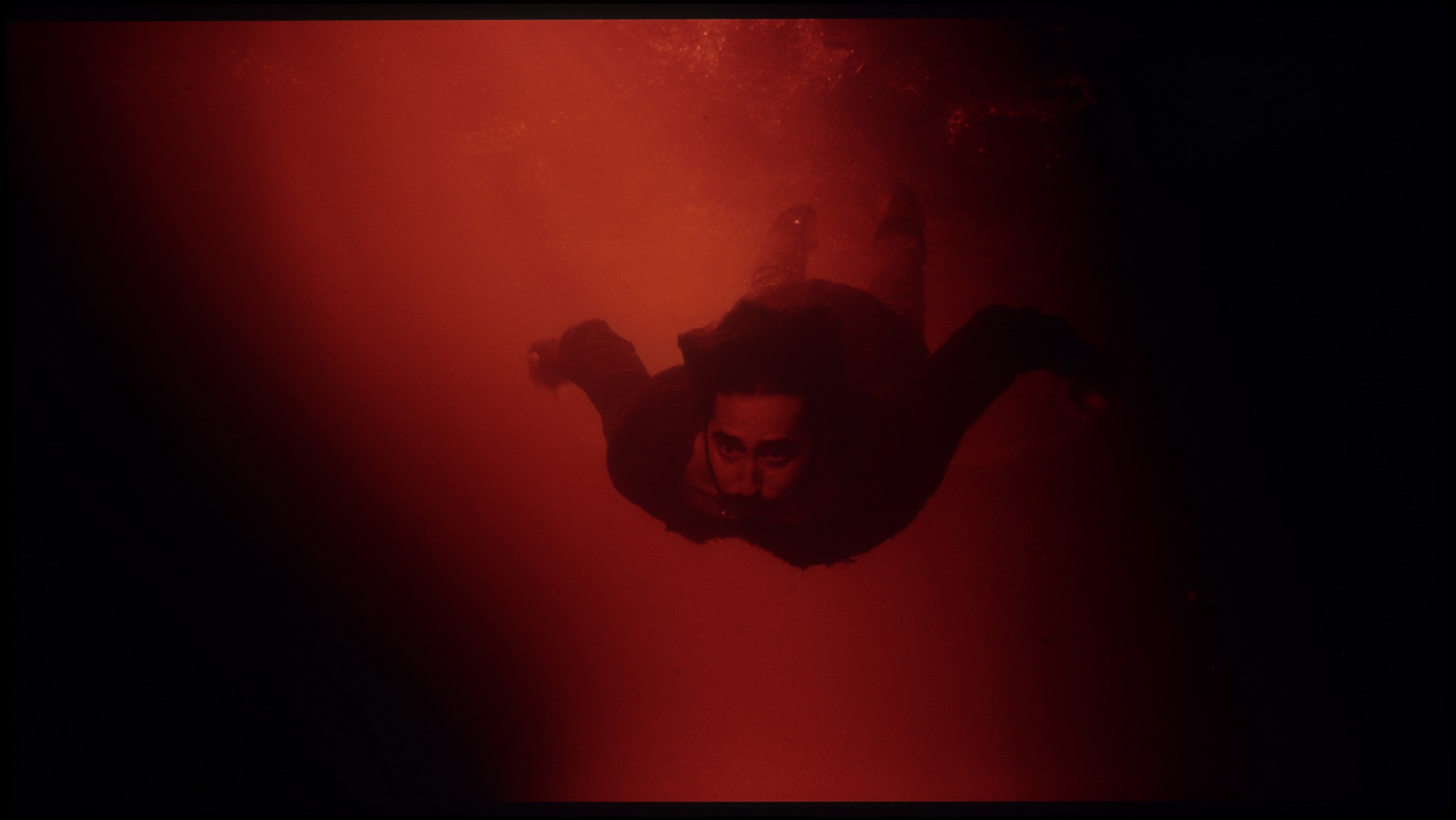




Samsung Q60D offers decent performance, making it an attractive choice for film and gaming enthusiasts. The gradation of bright colours is undoubtedly a strong point of this model, ensuring that brighter scenes look exceptionally natural and smooth. Although the transitions in darker shades may reveal the colours a bit more, the overall effect remains satisfactory. The television handles tonal transitions well, providing viewers with visual experiences that enhance movie nights and gaming sessions. Thanks to these qualities, the Samsung Q60D will not spoil our film screenings.
One of the significant elements affecting the perception of the image is the way in which the television handles tonal transitions – that is, the blending of colours and shades without clear boundaries. In the case of the Samsung U8092F model, it performed really well. On the test screens, we did not observe visible banding or disturbances in the colour gradients. The image retains a natural character, without excessive digital interference, which unfortunately is often the norm in this class of equipment. Minimal imperfections appeared in very bright areas, but they are practically unnoticeable and do not affect everyday use of the television.
Image scaling and smoothness of tonal transitions
5.4/10
5/10
Smooth transition function

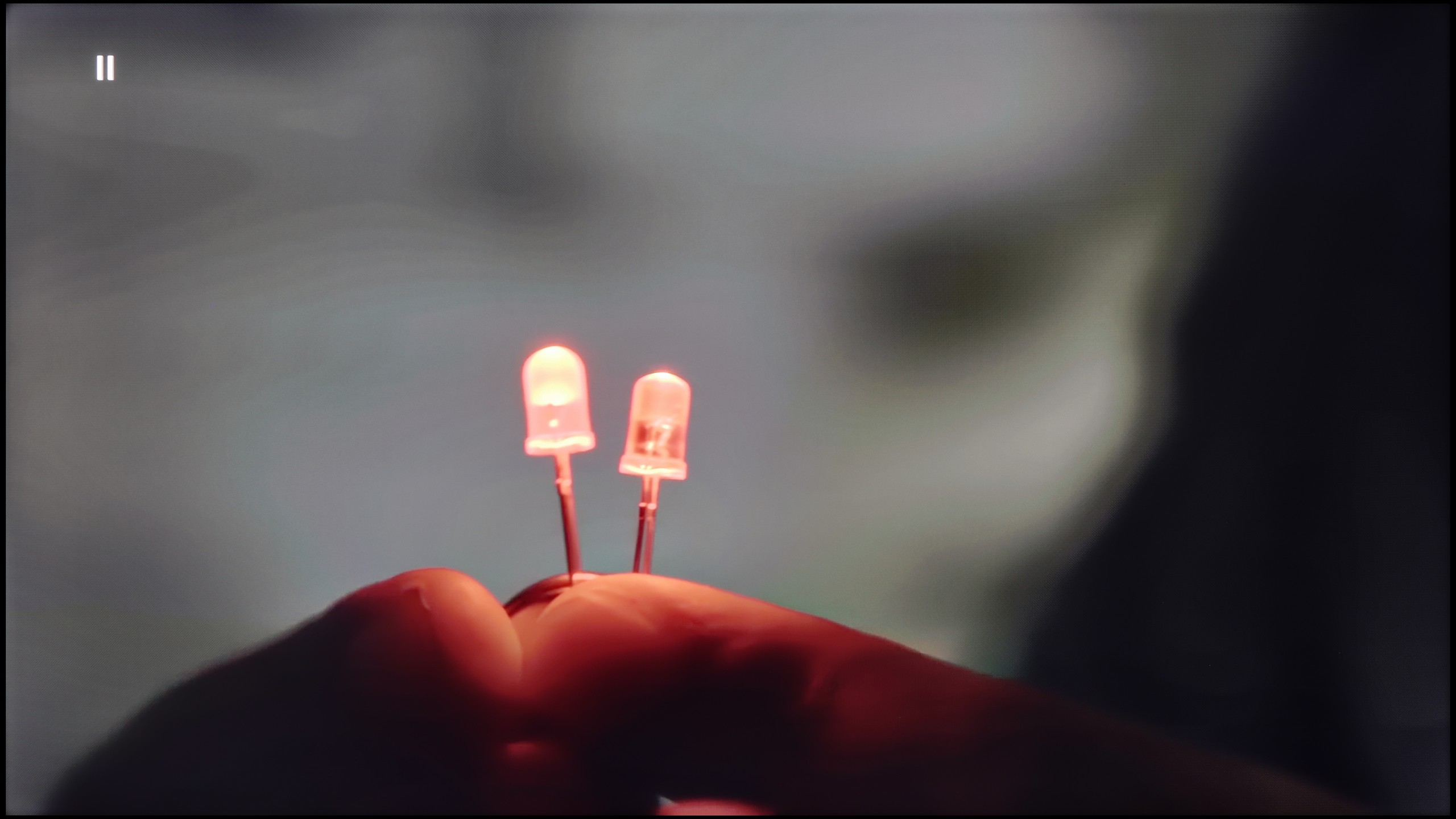
Image without overscan on the SD signal


However, when it comes to processing and scaling lower quality materials, the television performs quite well. The image is rendered without overscan, which ensures full use of the available screen area. Additionally, the outlines of the model or the branches of the tree are not overly jagged, which translates to a satisfactory quality of the displayed content. Although noise reduction could be more effective, the overall results of processing lower quality materials are positive and meet expectations.
When it comes to how the Samsung U8000F handles lower quality materials, we must admit that Samsung has made progress compared to its predecessor from last year – the DU7192 model, which theoretically occupies the same position in the lineup. This year's model has been equipped with a feature to improve the fluidity of tone transitions, which has been implemented much better than last year. Indeed, the television still utilizes quite strong algorithms that can distort details or remove film grain, but nonetheless – it can confidently be said that it works effectively. However, not everything has gone perfectly. The U8000F has noticeable issues with slightly cutting the image when watching very old content in very low resolution. If someone plans to play their old VHS tape, they must reckon with the fact that the image may appear slightly "cut off".
Blur and motion smoothness
4.5/10
5.5/10

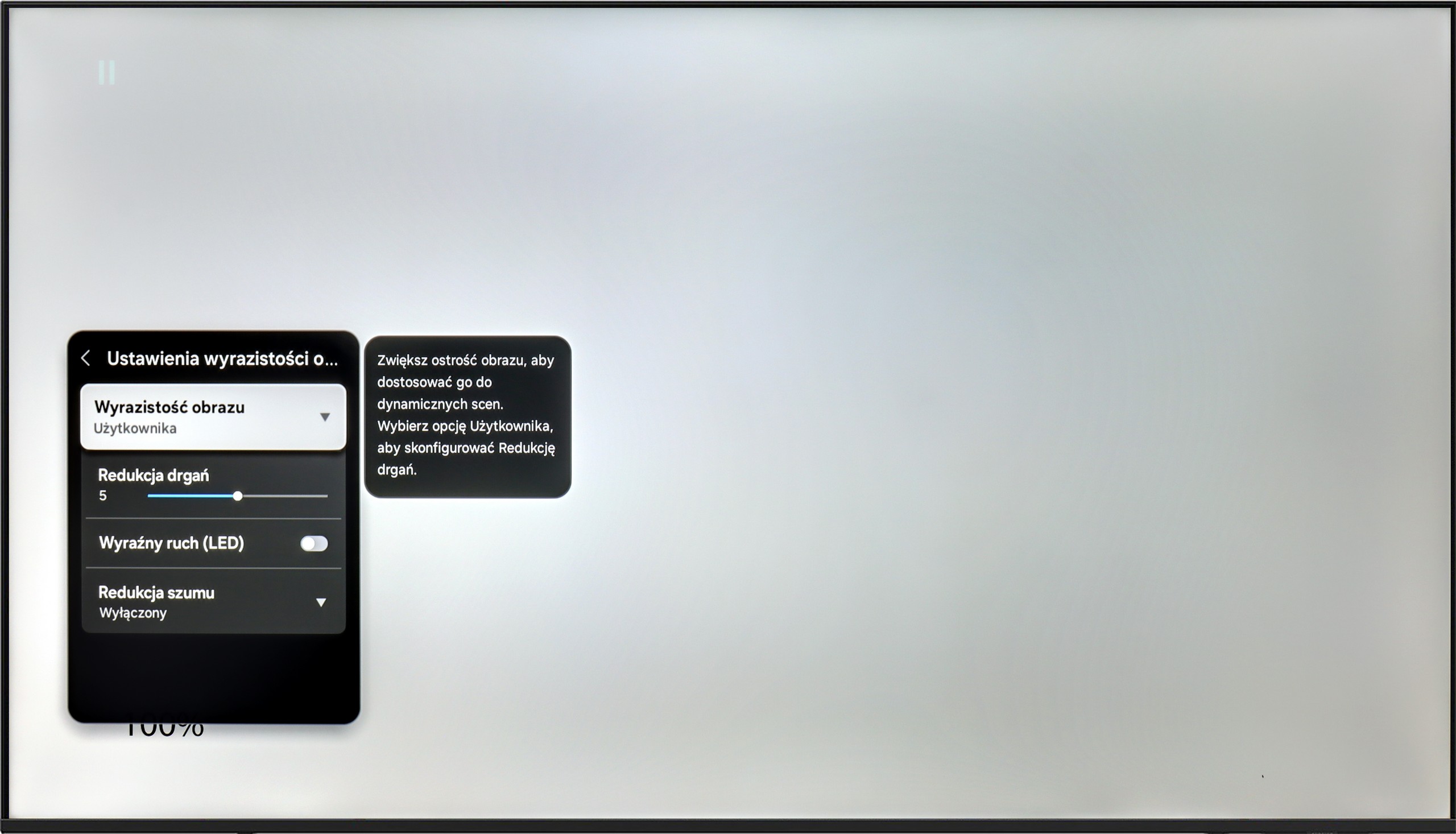
Blur (native resolution, maximum refresh rate):






Blur (BFI function enabled):
Image flickers in this mode



Image flickers in this mode



Smużenie ():
Smużenie (Upłynniacz ruchu 4K@60Hz):
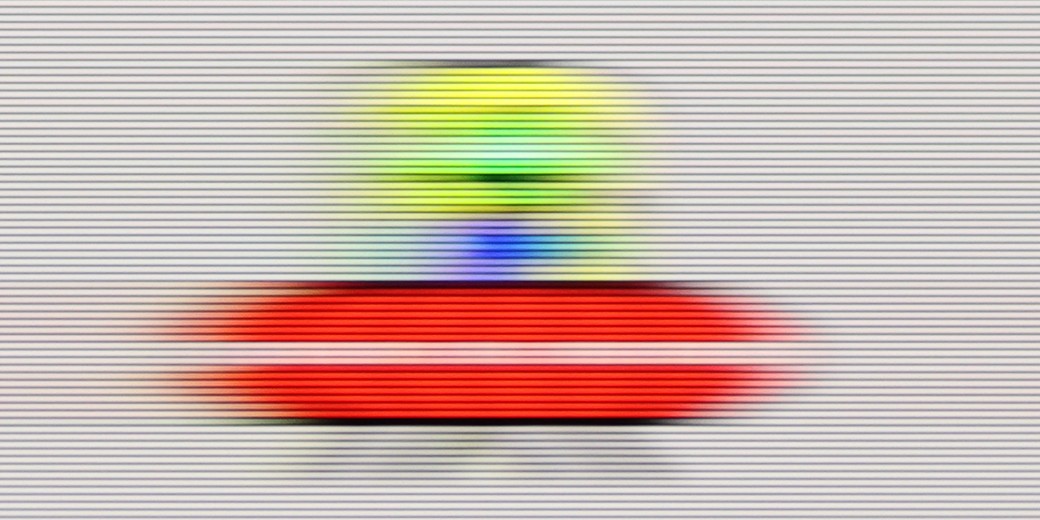
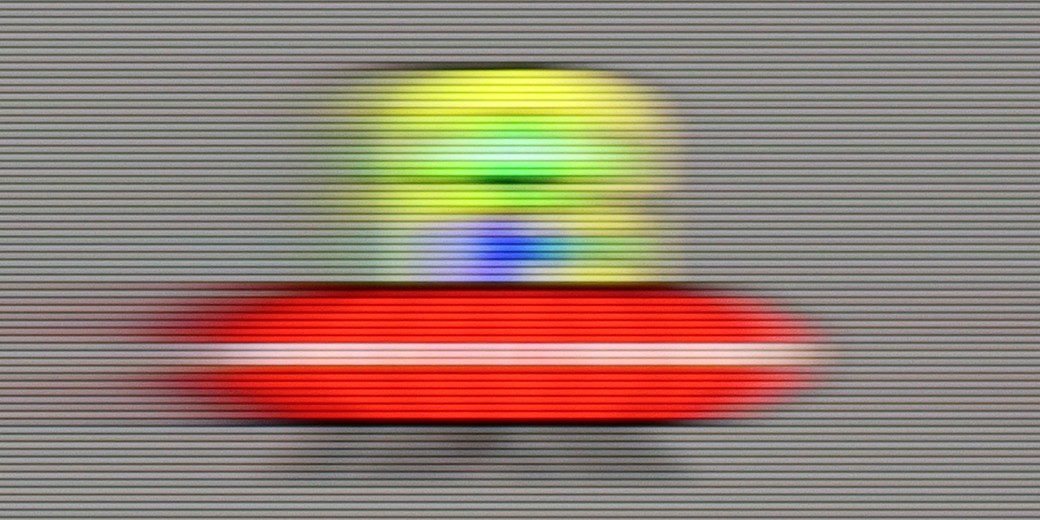
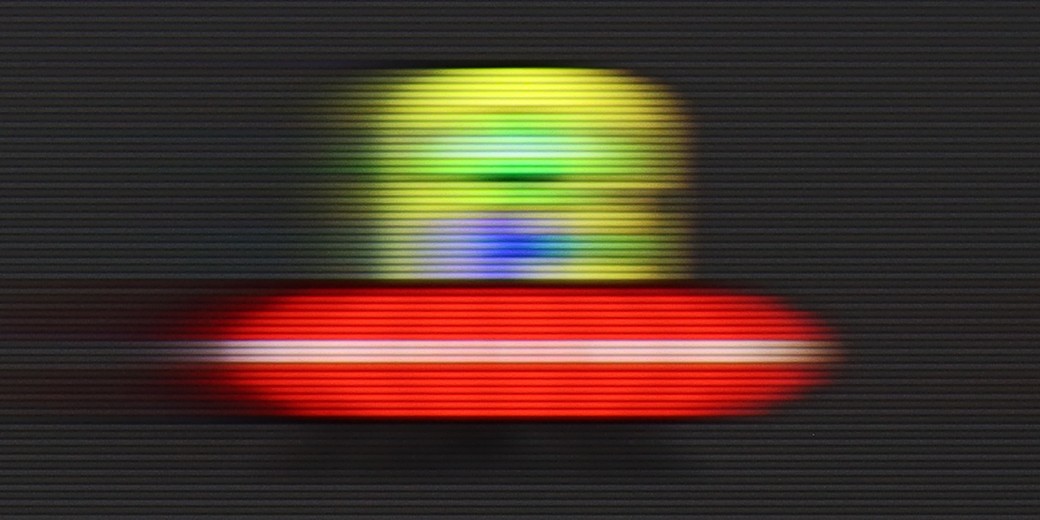
Samsung Q60D is equipped with a 60 Hz panel and a film smoothness enhancement option known as "Motion Blur Reduction." This feature aims to minimise motion blur and enhance overall image smoothness, which will certainly appeal to users who are primarily looking for a television to watch films and series. Thanks to this technology, viewers can enjoy a more fluid visual experience, even in dynamic action scenes where details are crucial. However, it is worth noting that while "Motion Blur Reduction" improves the smoothness of images in films, for gaming, this panel may not be the best choice as it exhibits significant motion blur, which can be seen in the picture below.
The Samsung U8000F is equipped with a 60 Hz panel, so it's clear right from the start that one shouldn't expect miracles. This is simply the standard in this class – adequate for everyday viewing, but without any fireworks. The television offers a single motion smoothing slider – a feature called "Motion Blur Reduction," which allows us to adjust the smoothness of the image in films. Higher settings produce a more "theatrical" and smoothed effect, while lower settings help retain the film's original character with a slight 24p effect. An interesting feature is "Clear Motion LED," which is the BFI mode – inserting black frames between image frames to improve motion clarity. In practice, however, the screen flickers heavily when this feature is activated and should rather be considered an experiment than something that genuinely enhances gaming comfort.
Console compatibility and gaming features
4.8/10
4/10
- ALLM
- VRR
- VRR range48 - 60Hz
- Dolby Vision Game Mode
- Correct implementation of HGIG
- 1080p@120Hz
- 1440p@120Hz
- 4K@120Hz
- Game bar

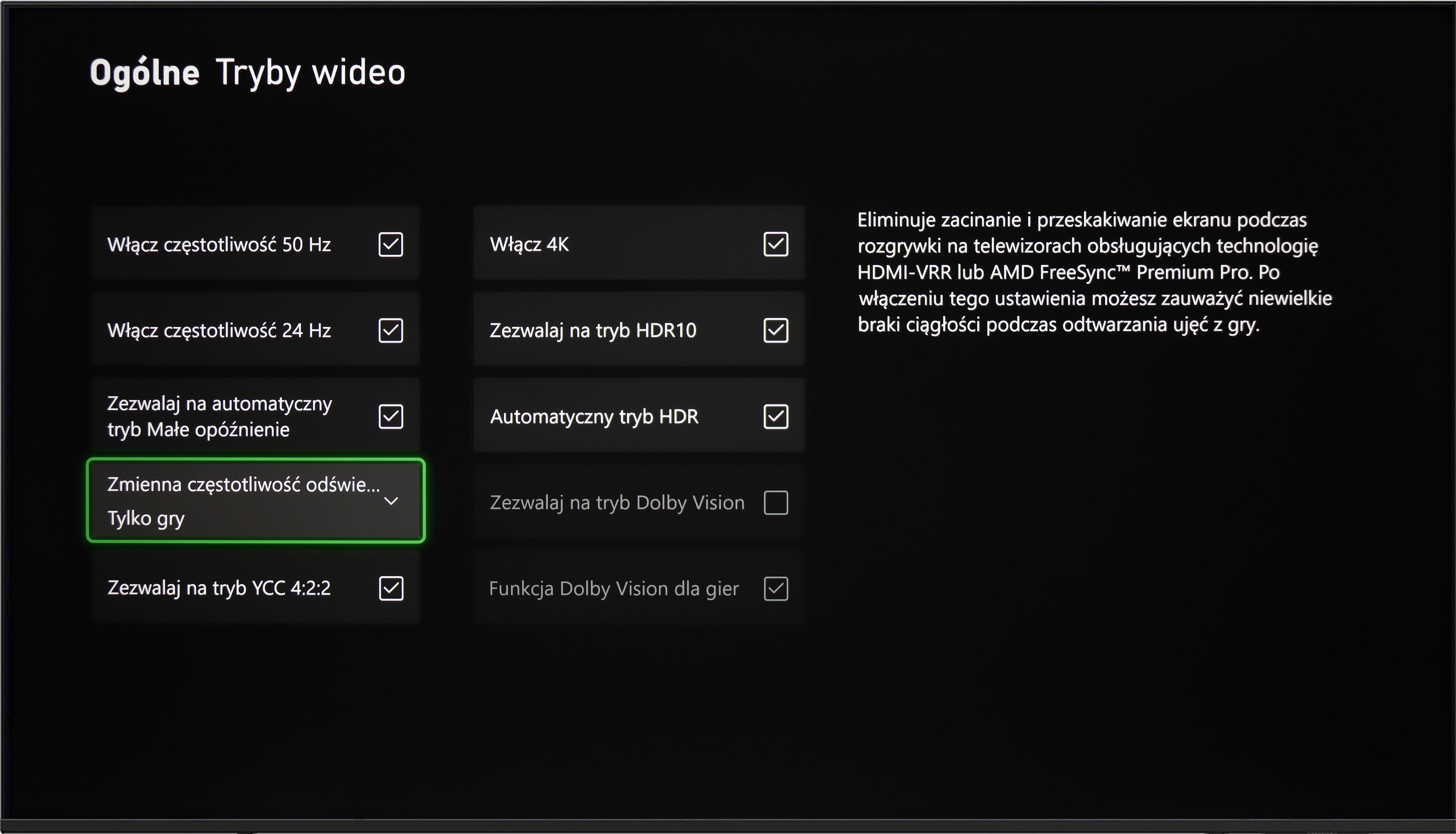

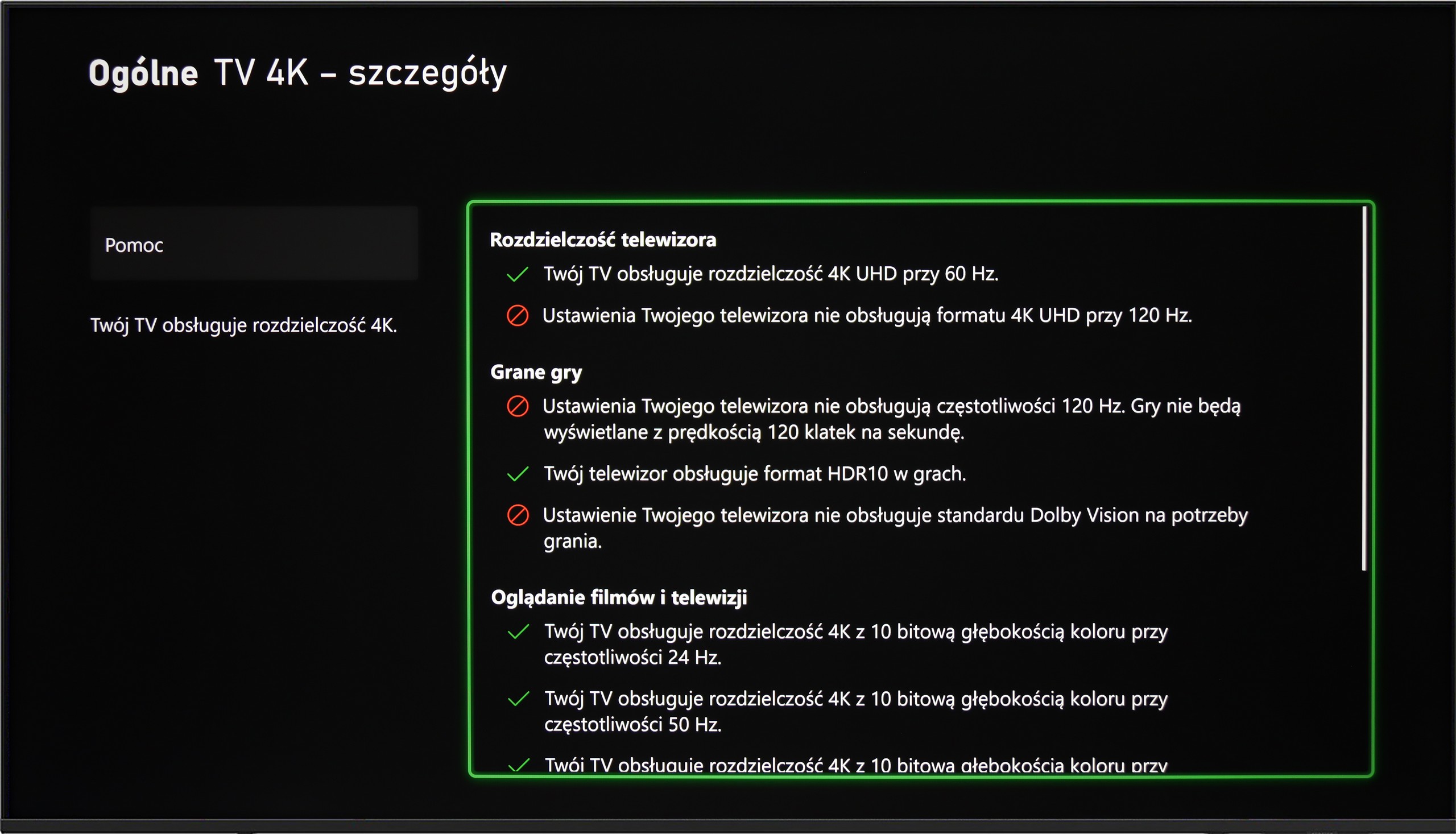

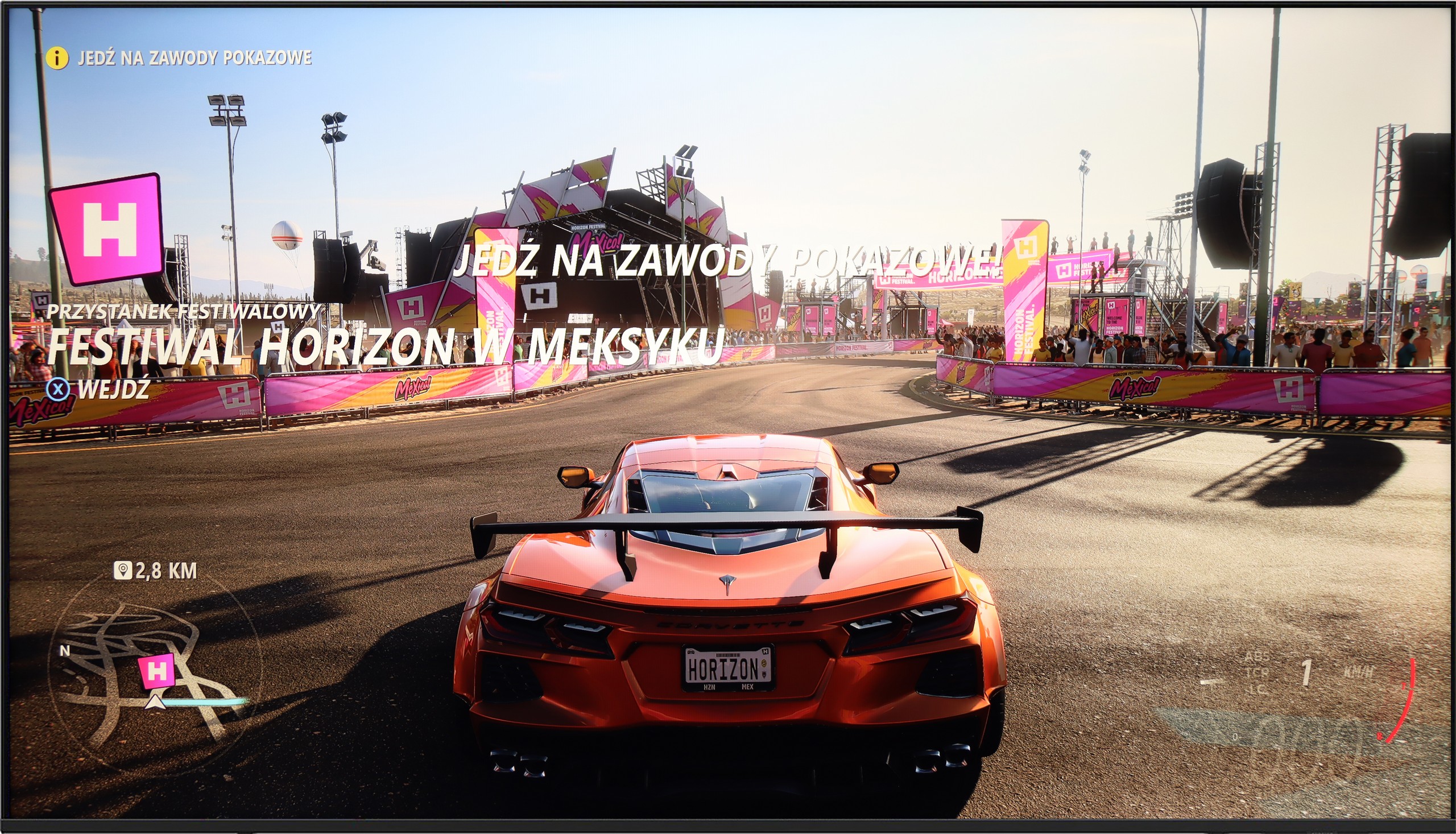

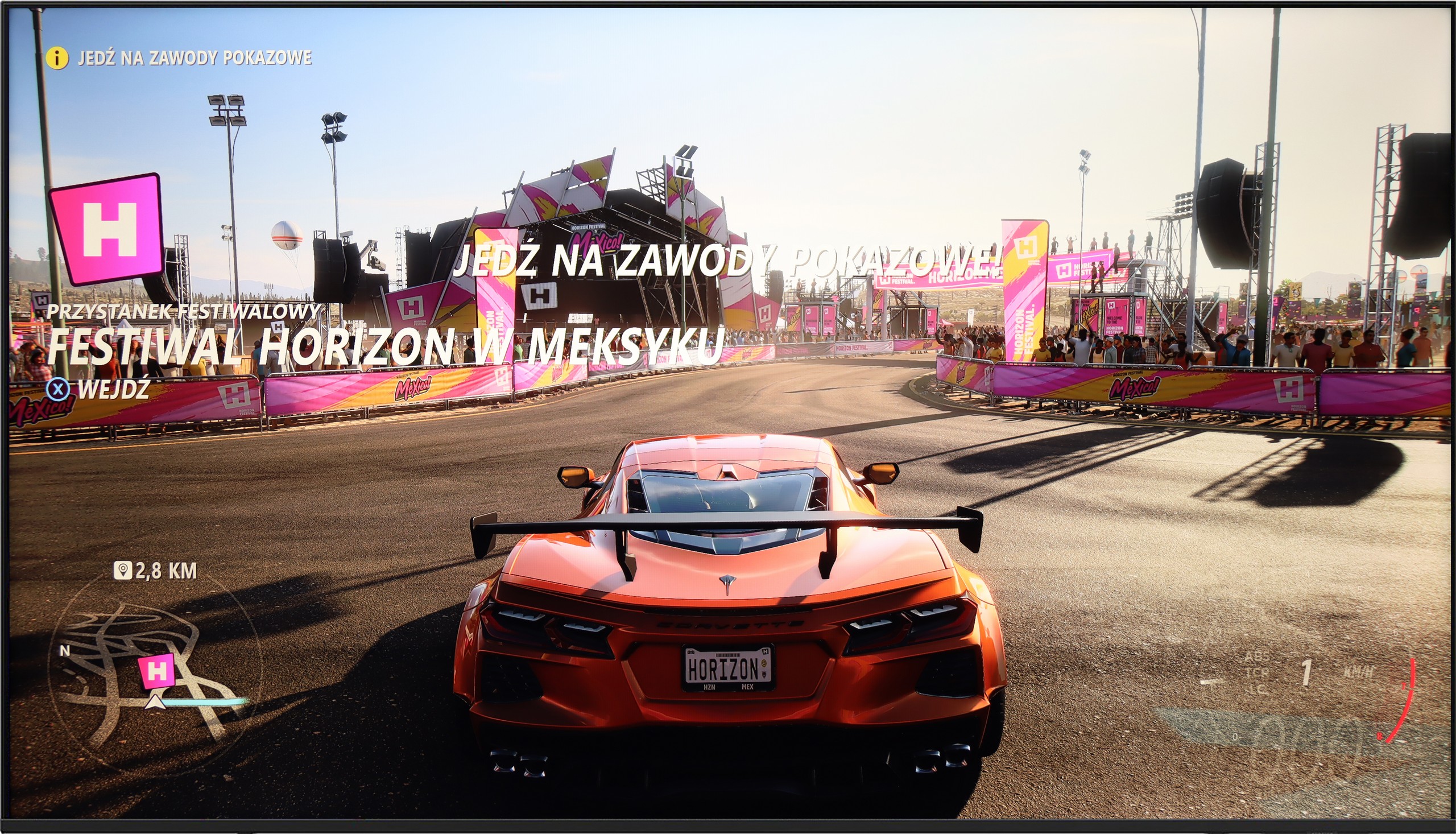
Samsung Q60D is equipped with features such as ALLM (Auto Low Latency Mode), HGiG (HDR Gaming Interest Group) and Game Bar, which significantly enhance the gaming experience. However, the lack of HDMI 2.1 implementation limits capabilities, preventing the use of VRR (Variable Refresh Rate), which could further improve smoothness and picture quality. Overall, for casual gamers, this television should perform well in everyday use, providing satisfactory gaming experiences. However, if we are more demanding in terms of gaming, it is worth considering models with a higher refresh rate and HDMI 2.1, which will ensure full functionality and better support for the latest games. In such cases, investing in a more advanced television will yield significantly better results in terms of smoothness and picture quality, which is crucial for gaming enthusiasts.
Samsung U8000F offers a basic set of features for gamers, which may still be sufficient for less demanding users. It includes an automatic game mode – when a game is launched on the console, the television automatically switches to low latency mode, significantly improving response times. There is also a VRR feature, or variable refresh rate, which operates in the range of 48 to 60 Hz. This means that both Xbox and PS5 will not produce the "tearing" effect – as long as we stay within this range.
Unfortunately, that’s about it for the advantages. Additions like Game Bar or higher refresh rates are reserved for higher-end Samsung models from the 2025 line. In theory, the television also supports the HGiG feature, which should adjust HDR imagery to the creators' intentions. Unfortunately – despite the fact that this feature appears in brochures and promotional materials – its configuration on the Xbox console turned out to be... impossible in practice.
Input lag
9.9/10
10/10
SDR
HDR
Dolby Vision
When it comes to input lag, the Samsung Q60D television does not disappoint in this aspect. With results of around 15 ms, the television offers truly impressive responsiveness. Such a low input lag means that reactions to commands from the controller are instantaneous, which translates to better gaming experience, especially in dynamic titles that require precise movements.
The Samsung U8092F performed phenomenally in our input lag tests. Regardless of the resolution, the results were very low, which is truly impressive for this price segment. One can confidently say that gaming on this television will not cause irritation due to large delays between what we do on the pad and what we see on the screen. For most gamers, even the more demanding ones, this result should be more than satisfactory.
Compatibility with PC
6/10
6/10


When it comes to working on a PC, the Samsung Q60D television offers very good font readability, regardless of the background on which they appear. Thanks to support for the 4:4:4 chroma format, text is clear and sharp, which is important when using office applications or browsing the internet. Additionally, the low input lag of 15 ms ensures that responses are immediate, significantly enhancing the user experience during work or gaming on the computer. However, the television has a 60Hz panel and does not support G-Sync, which could satisfy PC gamers.
Working on a computer using this television is a true pleasure. The Samsung U8092F supports chroma 4:4:4, and despite being a VA panel, the text readability is very, very good. The television is also suitable for occasional gaming on PC, mainly due to its low input lag. However, it should be noted that the G-Sync feature does not work on this model, which is strange as VRR operated without problems when it came to consoles.
Viewing angles
3/10
3.7/10
Samsung Q60D is equipped with a VA panel. The viewing angles are not its strongest point; when watching the image from the side, we can notice colour distortions and a drop in brightness. However, VA panels stand out for their good black reproduction, which translates into deeper and more intense movie scenes.
TV efficiency during daytime
6/10
3.8/10

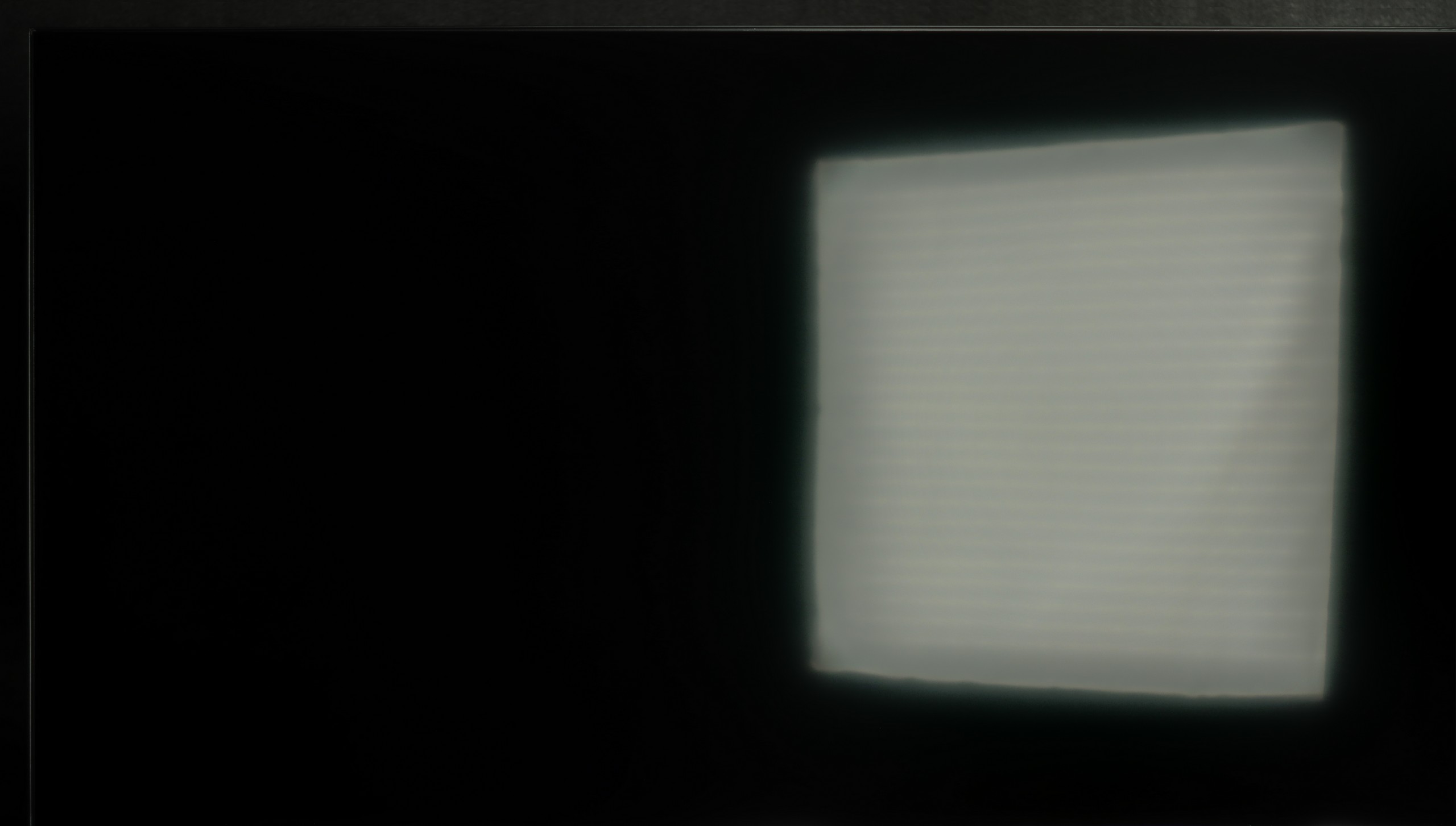

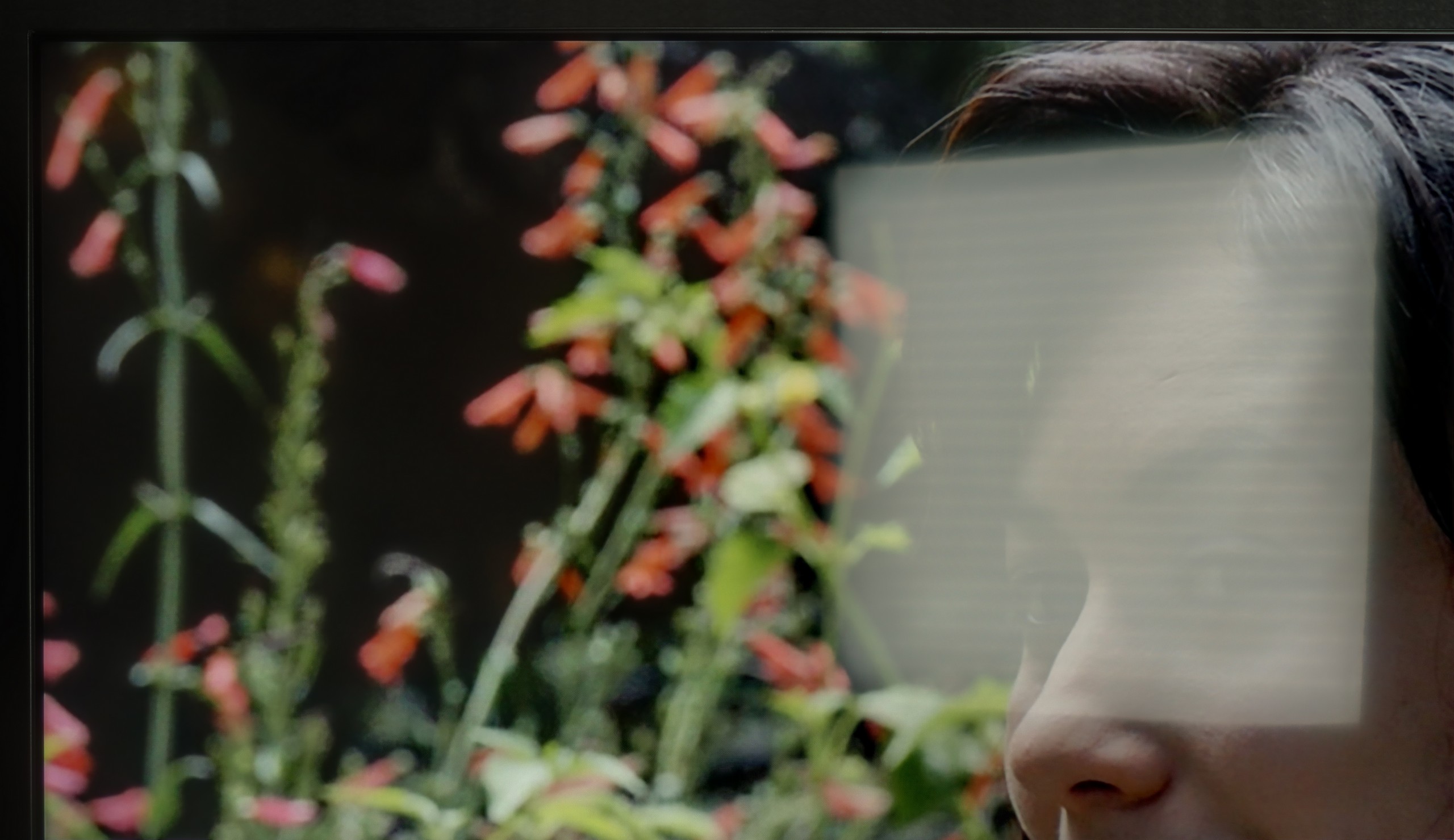
Matrix brightness
Average luminance SDR
Samsung U8000F (VA): 204 cd/m2
Samsung Q60D / Q67D / Q68D: 542 cd/m2
Samsung Q60D is equipped with a satin matrix, which averages well at suppressing reflections. Although the matrix does not eliminate them completely, its high brightness of 550 nits ensures that the image remains readable even in bright lighting conditions. This makes watching television during the day still comfortable, and the details are clearly visible, which makes this model a suitable choice for those using the television in daylight.
Thanks to the satin finish of the Samsung U8092F matrix, it handles glare quite well. The screen does not act like a mirror, and the colours – given the capabilities of this class of device – remain relatively saturated, even in slightly brighter conditions. Unfortunately, the coating itself won't work wonders. The television is simply too dark to effectively penetrate very difficult lighting conditions. If we place it facing a light source (e.g. a large window or a strong lamp) – unfortunately, one must consider that not everything will be clearly visible on it.
Details about the matrix
Subpixel Structure:

Panel uniformity:

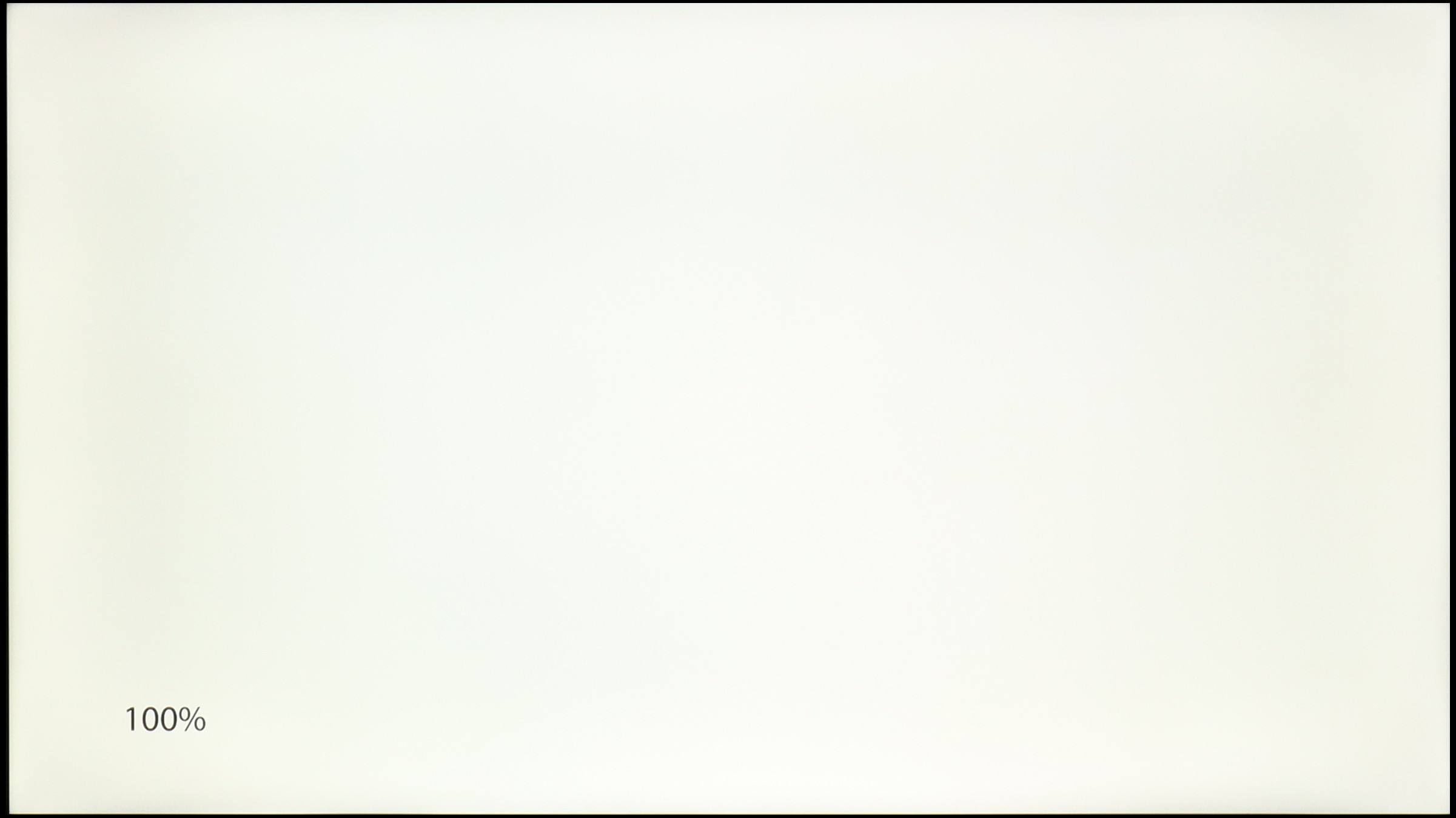
TV features
7.3/10
5.5/10
- HDMI inputs3 x HDMI 2.0, 0 x HDMI 2.13 x HDMI 2.0, 0 x HDMI 2.1
- OutputsToslink (Optical audio), eARC (HDMI), ARC (HDMI)eARC (HDMI), ARC (HDMI)
- Network InterfacesWi-Fi 2.4GHz, Wi-Fi 5GHz, Ethernet (LAN) 100MbpsWi-Fi 2.4GHz, Wi-Fi 5GHz, Ethernet (LAN) 100Mbps
- TV receptionDVB-T, DVB-T2, DVB-S, DVB-S2, DVB-CDVB-T, DVB-T2, DVB-S, DVB-S2, DVB-C
Classic features:
- Recording to USB (terrestrial TV)
- Recording programming
- Picture in Picture (PiP)
- RF remote control (no need to aim at the screen)
- Backlit remote control
- Teletext
- Audio only mode
- Possibility to connect Bluetooth headphones to the TV
- Possibility to simultaneously use Bluetooth headphones and the TV speaker
Smart features:
- AirPlay
- Screen mirroring (Windows Miracast)
- Wyszukiwanie głosowe
- Voice search in native language
- Ability to connect a keyboard and mouse


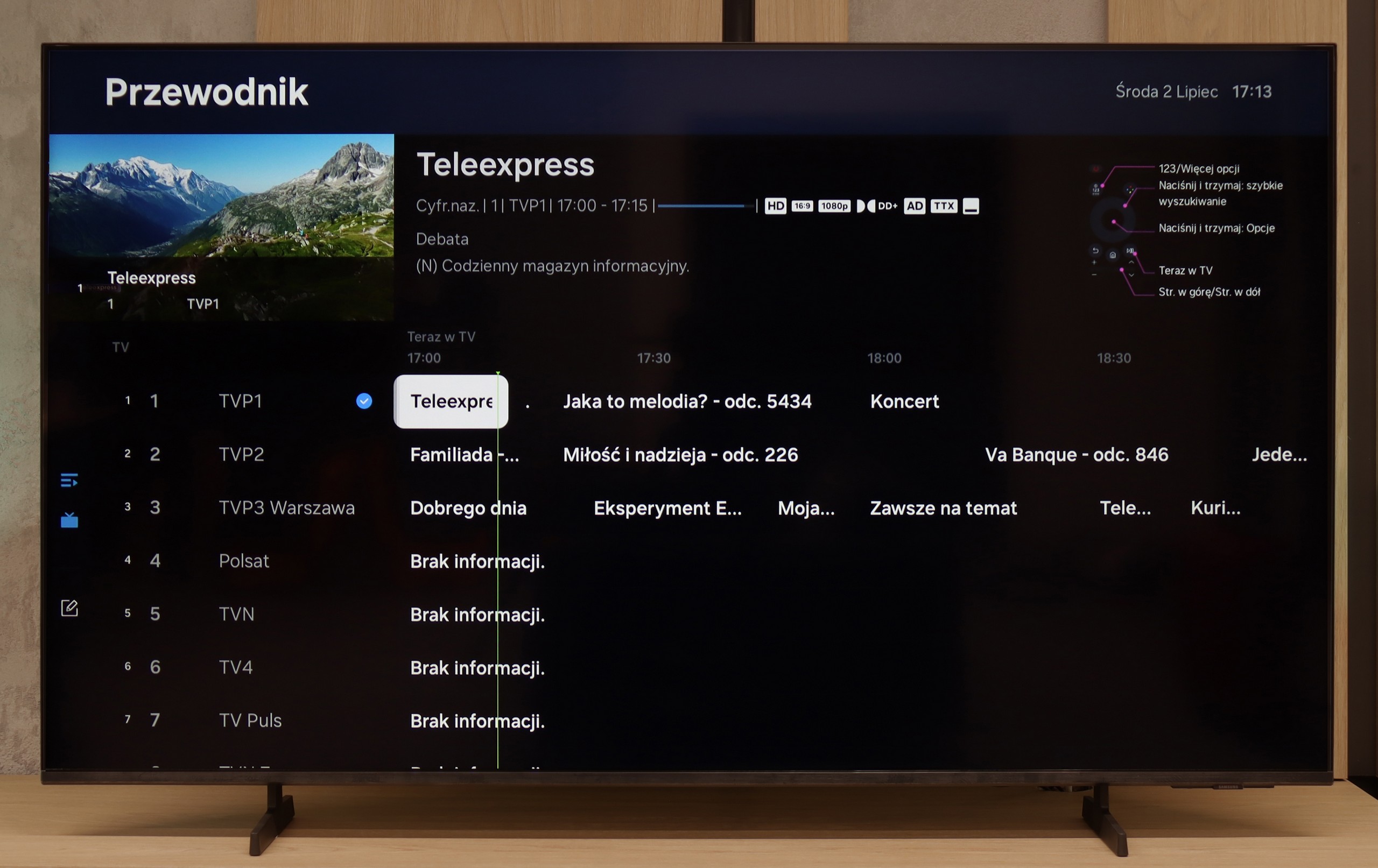
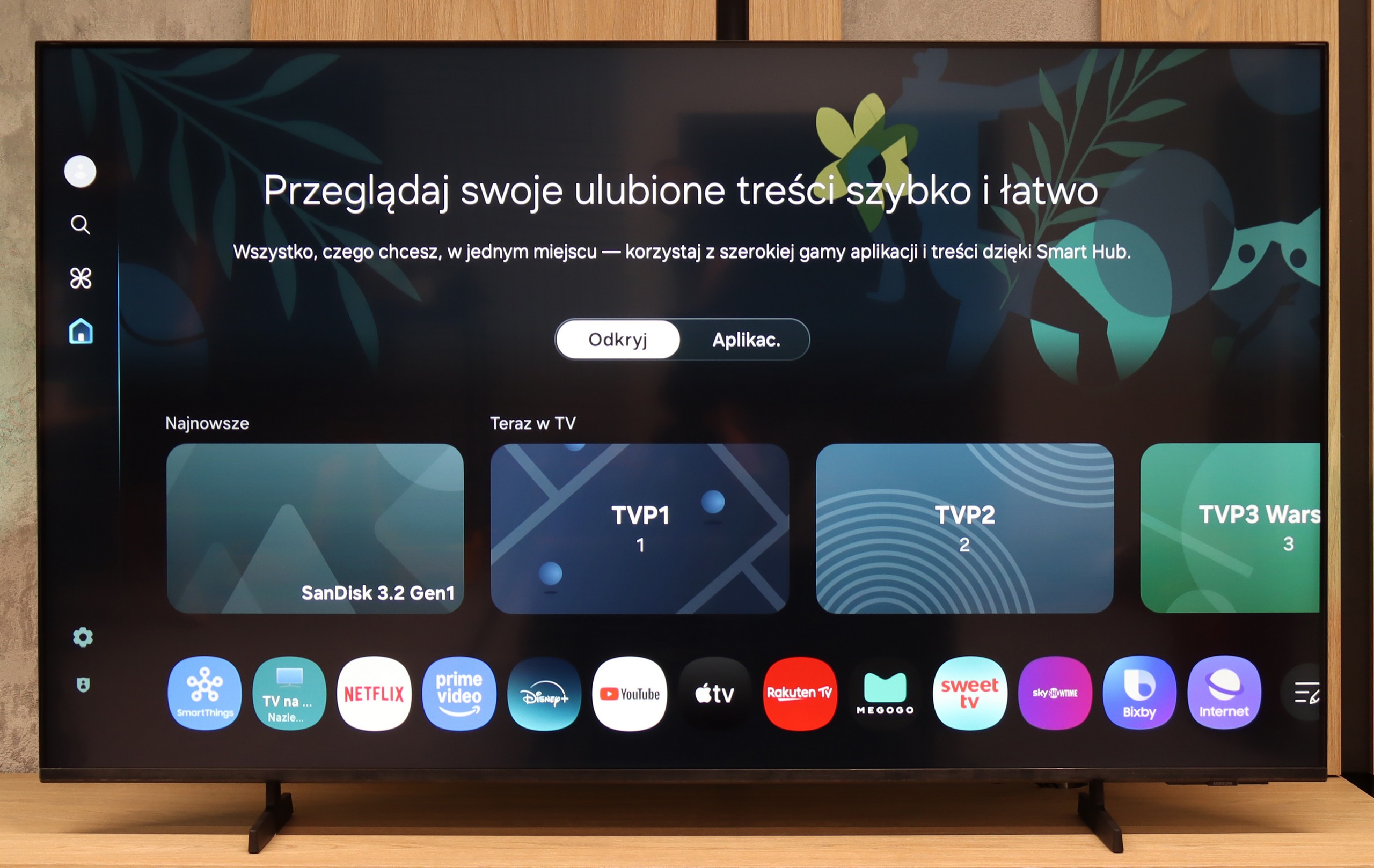
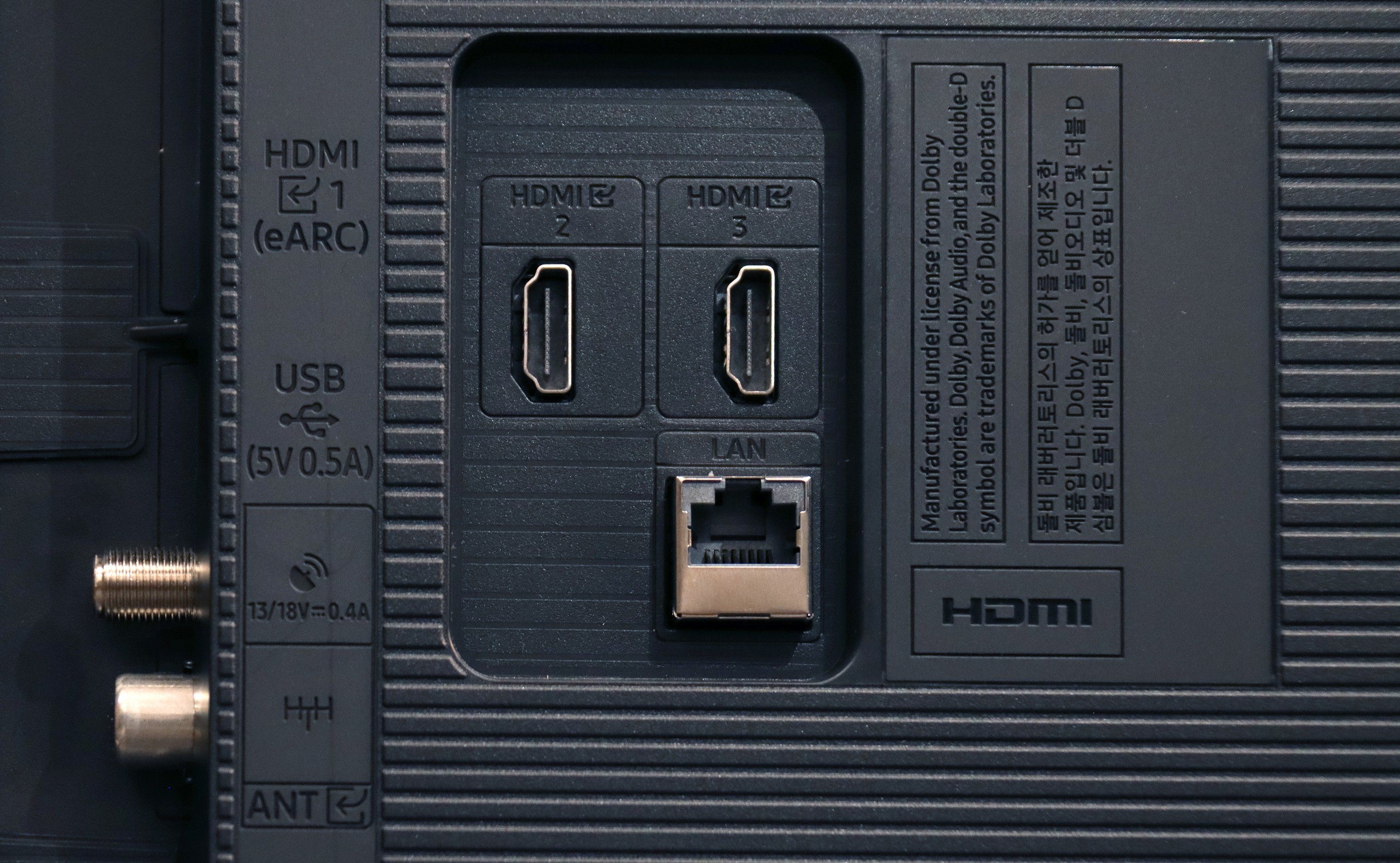
Samsung Q60D operates on the proprietary Tizen system, which, although not as open as Google's system and having certain limitations regarding available applications, should satisfy most users. The interface is clear and intuitive, allowing easy access to popular streaming platforms such as Netflix, YouTube, and Prime Video. Users will also appreciate the ability to customise the home screen, enabling quick jumps to favourite applications and content. However, the lack of a recording feature may be a concern for those who wish to archive their favourite programmes or films for later. On the other hand, a pleasant surprise is the presence of AirPlay functionality, which allows for seamless content streaming from Apple devices, such as iPhone or iPad. This enables users to easily share photos, videos, and other materials without the need for cables.
Additionally, the television allows for the connection of various peripheral devices via Bluetooth, significantly enhancing its functionality. Users can make use of wireless headphones, soundbars, and other accessories, which translates into greater comfort of use. The remote control included with the television is slim, elegant, and ergonomic. It is equipped with an internal battery that can be charged via a USB-C port or solar energy, which is a convenient solution that eliminates the need for battery replacement. Furthermore, it allows control of other devices such as the external decoder NC+ / Canal +.
Moreover, the SmartThings app for smartphones and iPhone enables the integration of the television with other smart devices in the home. This allows users to remotely control various elements of their home, such as Philips Hue smart lighting, Yeelight, and other products compatible with this system. The Samsung Q60D becomes the focal point in a smart home, making it easy to manage daily tasks and entertainment.
Samsung U8092F – like all this year's models from this brand – runs on the Tizen operating system. The system itself is really well developed: we have access to many applications (though not all), a well-developed smart home integration, and various add-ons, including exclusive Samsung applications. Features such as AirPlay and Chromecast are also available, allowing us to easily connect our phone to the television and share multimedia.
Unfortunately, since this is Samsung's cheapest series in 2025, the manufacturer did not choose to include a solar remote control. In the box, we find a classic infrared remote control that visually resembles a newer version, but unfortunately lacks voice functions. As for typical "television" add-ons – there is no recording feature or PiP (picture-in-picture) mode. On the positive side, the HDMI eARC works well, allowing easy control of devices like a decoder or soundbar with the bundled remote – and it indeed works seamlessly.
Playing files from USB
9/10
8.7/10
Supported photo formats:
Maximum photo resolution:

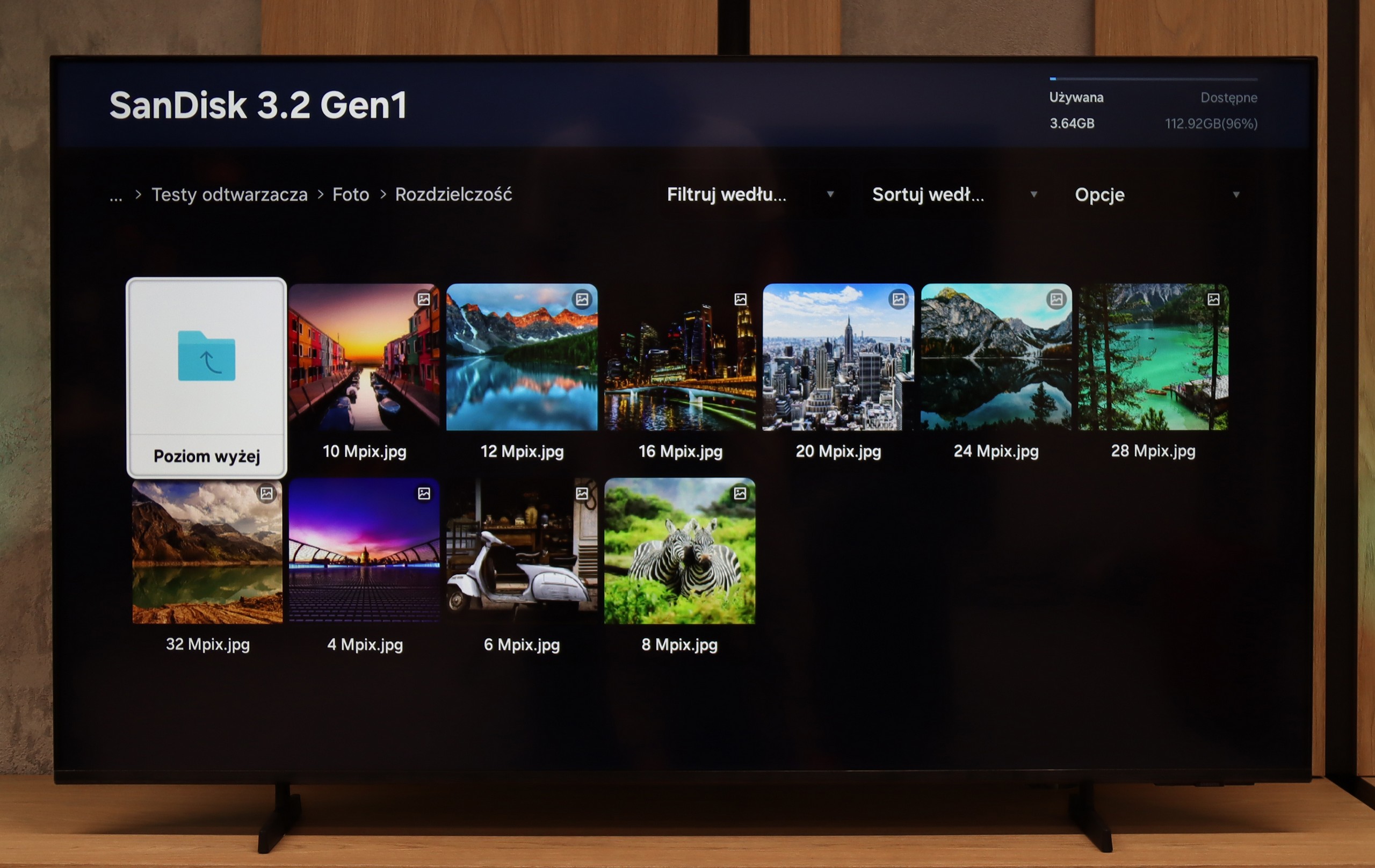
The built-in player in the Samsung Q60D television is one of its significant advantages. It handles most video and audio files used during testing exceptionally well. The only exceptions are the Dolby Vision format, which is not surprising, and less popular codecs. On the plus side, it also supports Polish characters and allows for font colour changes, enhancing user comfort.
Samsung U8092F handles the playback of files quite seamlessly – the television supports most popular audio and video formats. Of course, it does not support Dolby Vision, but this is simply not found in any Samsung model.
Certain reservations can be made regarding the support for external text files – those that the user would like to add as subtitles to a film. During our tests, the television only played TXT files, while other extensions such as SRT or SUB unfortunately did not work. This may not be a problem for everyone, but it is worth knowing. Perhaps this is an issue to be improved in the future through a television operating system update.
Apps
8.7/10
8.7/10














































Sound
6.2/10
5.7/10
- Subjective sound quality:6.2/105.7/10
- Dolby Digital Plus 7.1:
- Dolby True HD 7.1:
- Dolby Atmos in Dolby Digital Plus (JOC):
- Dolby Atmos in Dolby True HD:
- DTS:X in DTS-HD MA:
- DTS-HD Master Audio:
When it comes to sound, due to the slim design of the television Samsung Q60D, the audio quality is at an acceptable level, although it does not stand out in any particular way. On the plus side, the sound synchronisation function with a soundbar thanks to Q-Symphony technology allows for a better audio experience. Unfortunately, in terms of codec support, there is a significant issue – the television does not support the DTS format.
U8092F does not pretend to have home cinema on board. We receive a standard set of 2 x 10 W, which sounds decent, but without much excitement, though with a slight bass. For everyday viewing, this audio setup is entirely sufficient. We were positively surprised that it managed to play a film with the built-in Dolby Atmos (JOC) codec – although of course, we are not talking about true surround sound here.


